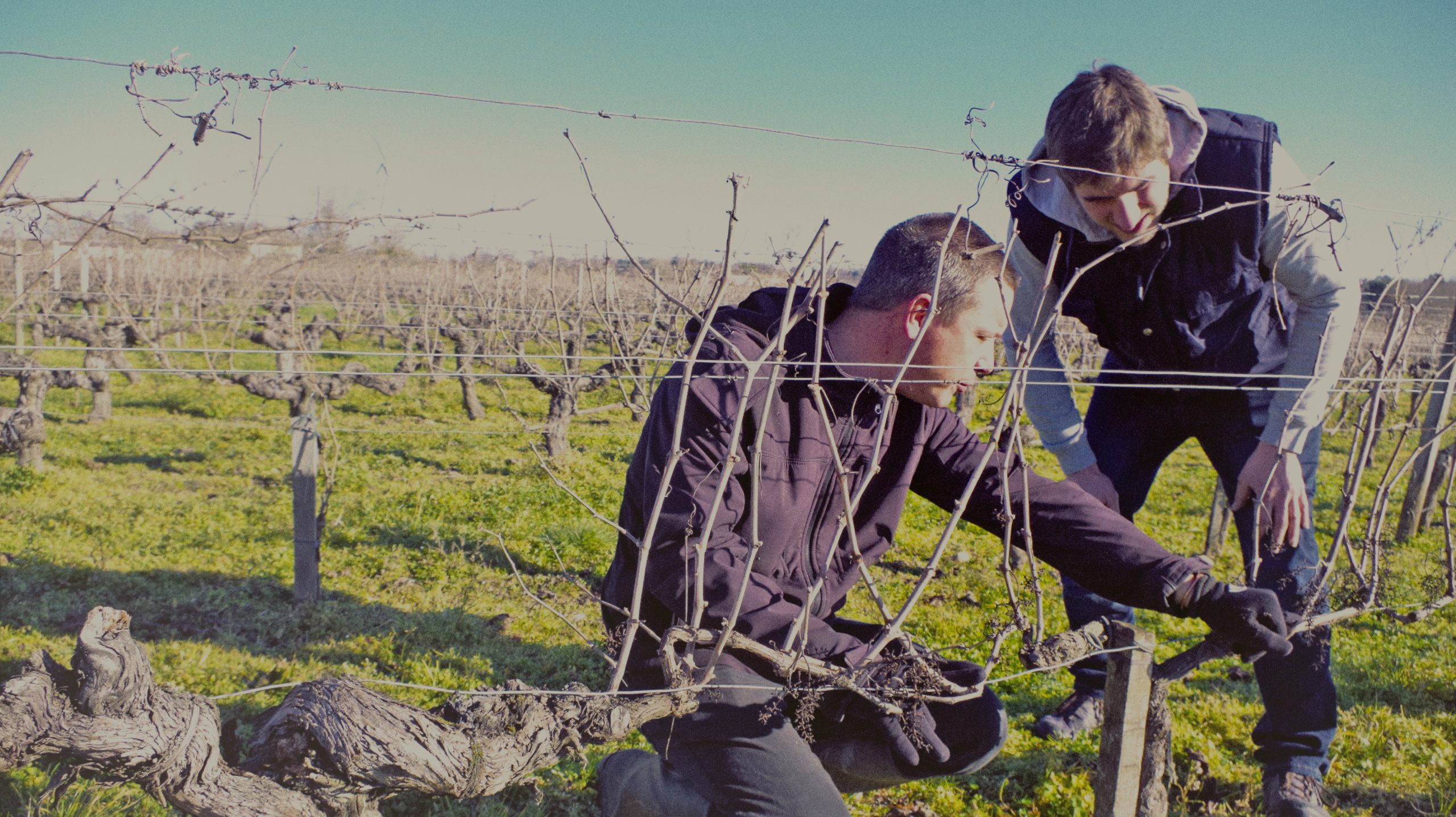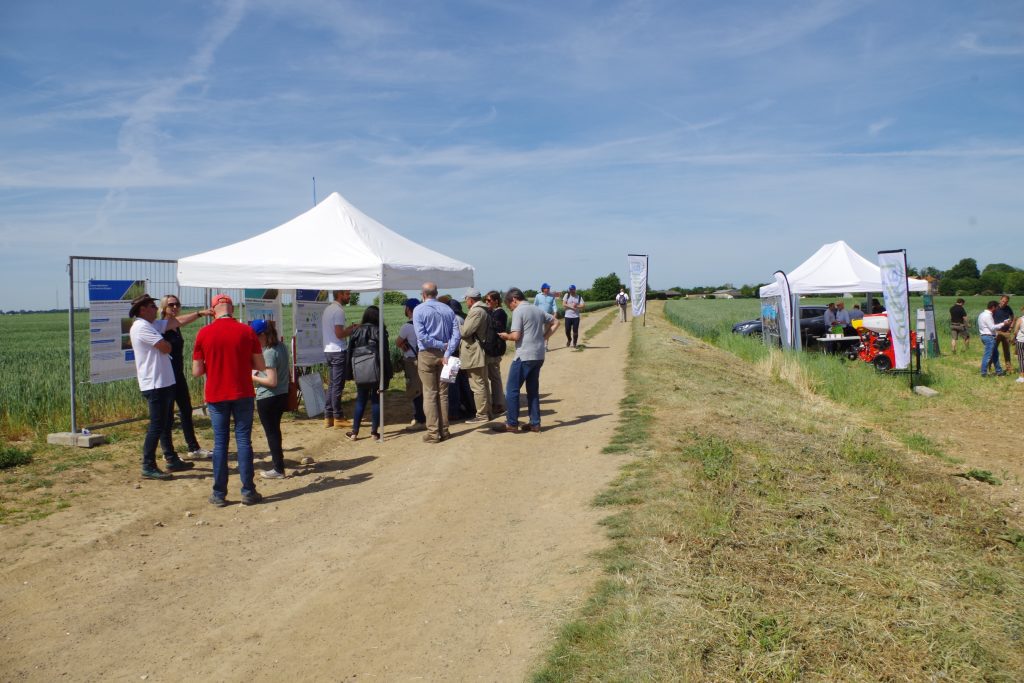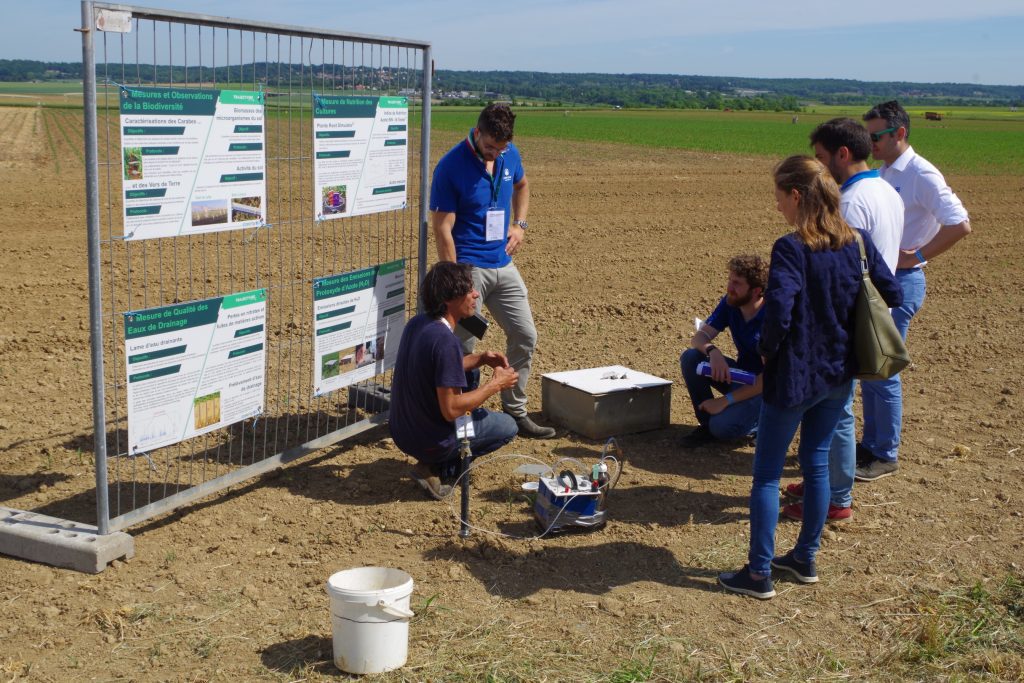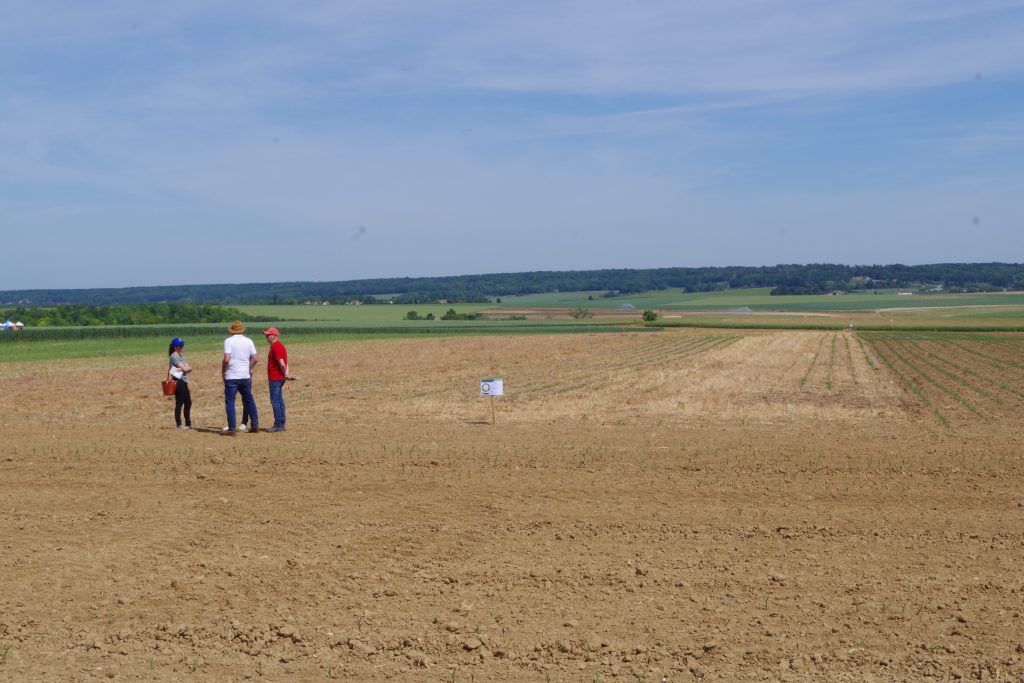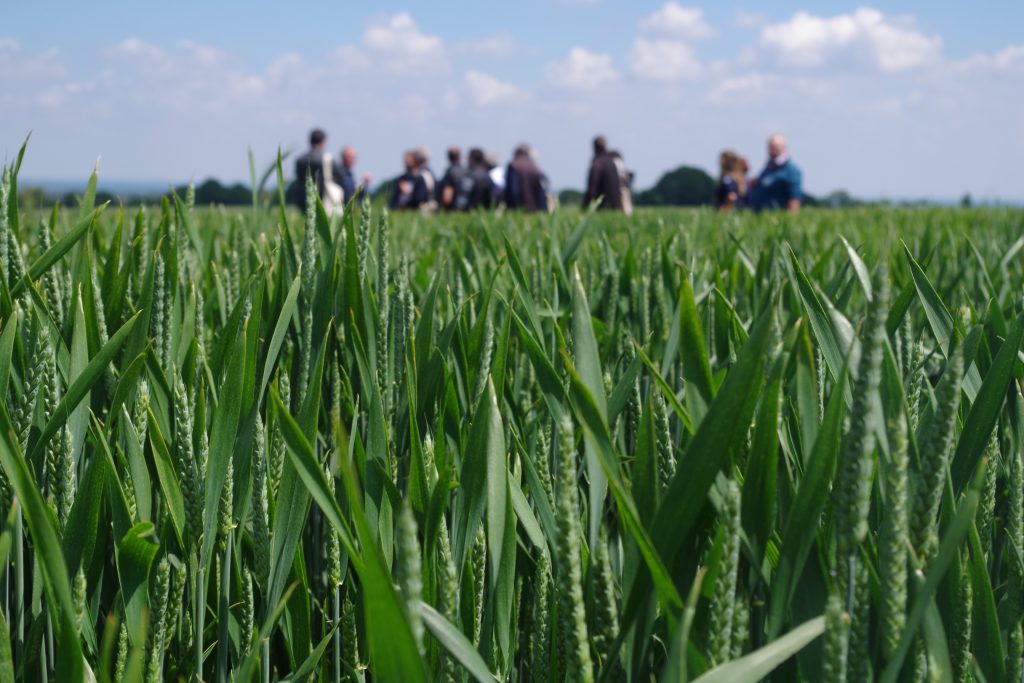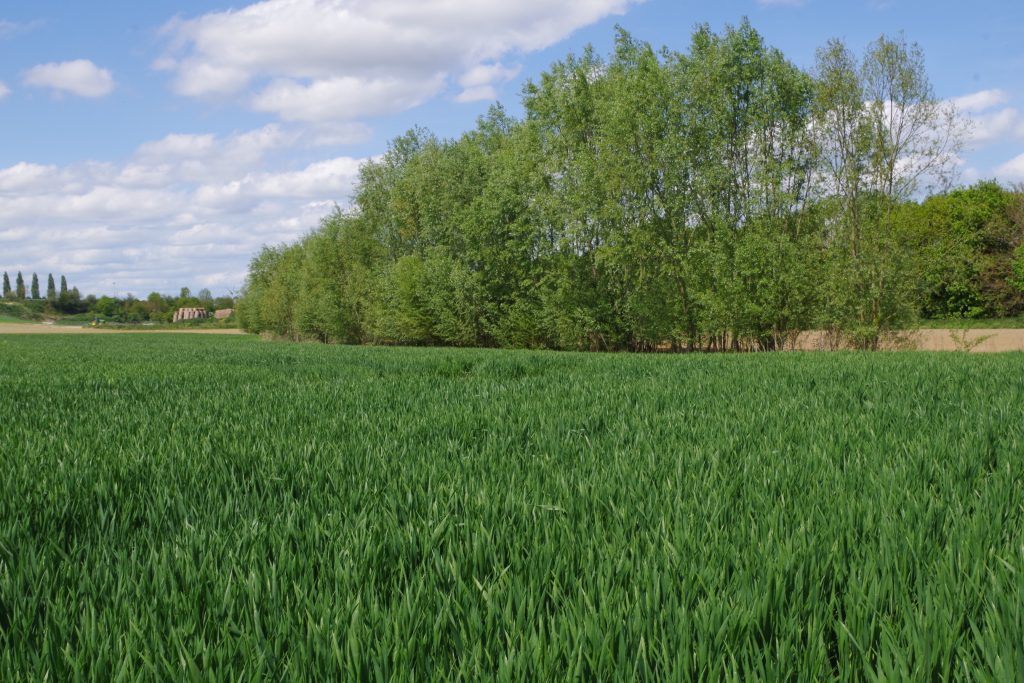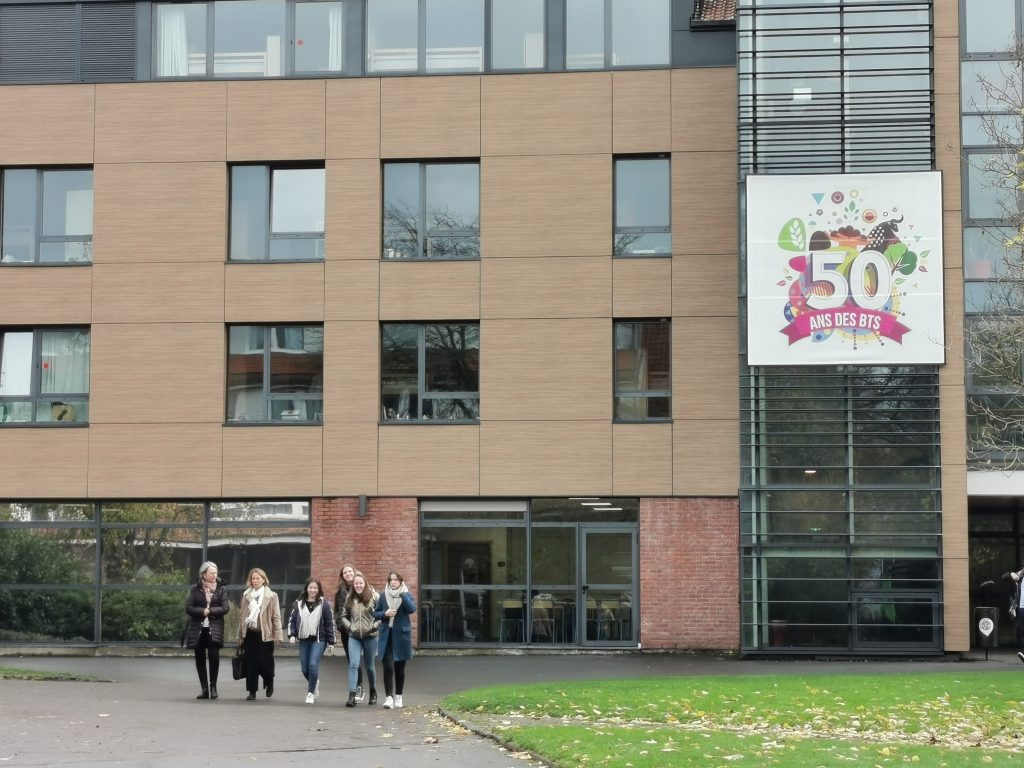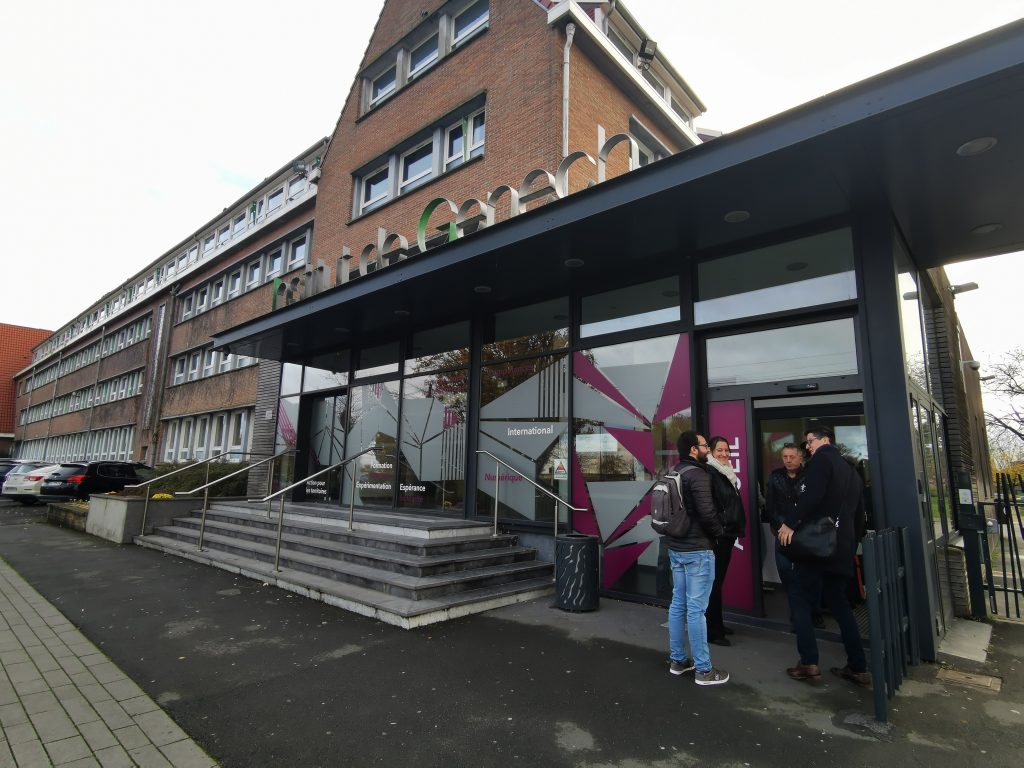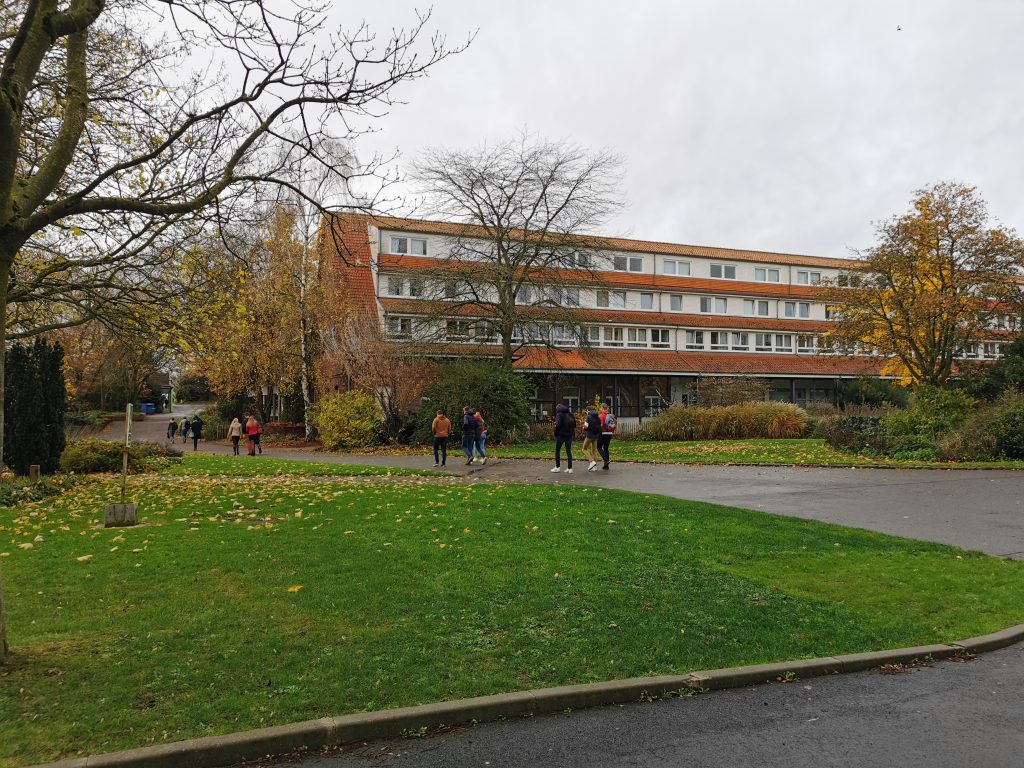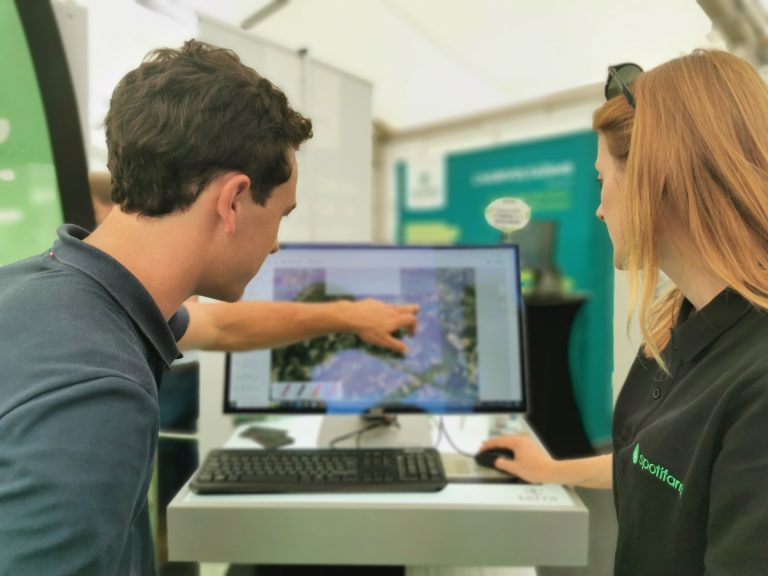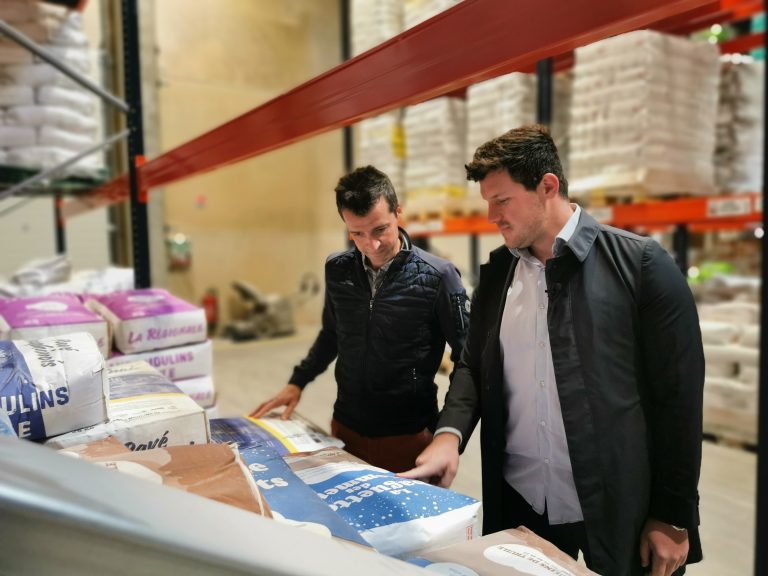The field of innovation is varied
Crop protection is changing. Science remains the essential component that must structure this change. Nevertheless, the implementation of innovative and combined methods depends on a strong collective dynamic.
Multiple actors, players and solutions: The webzine project called Pluriel emerged from this wealth. Through reports and interviews, we will hear from those engaged in experimenting, advising, assisting and farming. Anxious to share their innovative work and know-how and driven by a spirit of co-construction, they embody the models of sustainable agriculture. These agricultural models reduce their environmental footprint while ensuring the quality and volume of food production.
Stakeholders in agricultural sectors and rural areas, researchers, students, teachers, elected representatives, partners of the agricultural world, opinion leaders …, the webzine Pluriel is for you.
We hope you enjoy the articles.
Emmanuelle Pabolleta
General manager of Phyteis
Trajectoire AgroParisTech Platform: ten partners evaluate promising technologies
Working together to find the right solutions to optimise agricultural production systems in accordance with economic, environmental and social objectives. This is the quest of the ten financial and technical partners of the Trajectoire platform at the AgroParisTech experimental farm situated in Yvelines. The results are clear.
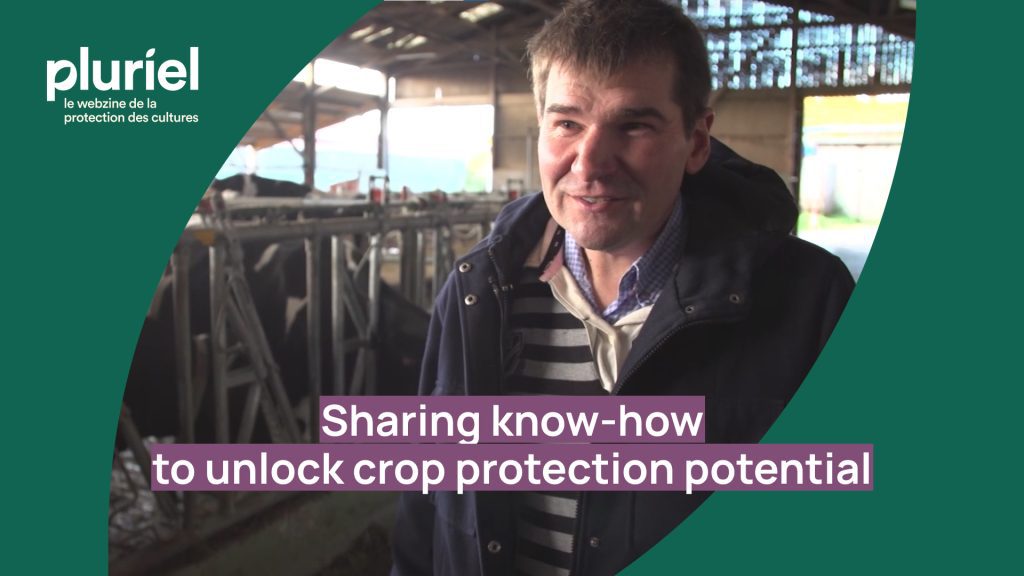
The Trajectoire platform, set up on the experimental farm in Thiverval-Grignon in the department of Yvelines, brings public and private stakeholders together to develop innovative growing protocols. Set up in 2016, it is marking the technical and economic optimization paths and supporting performance indicators! It is also designed to identify promising technologies and combine these to respond to the problems of declining inputs, including plant protection products, and address issues such as food sovereignty, carbon storage, maximisation of fodder production, etc.
Nine objectives evaluated in a five-year period of crop rotation
Nine 27-metre test strips were set up on 10 ha for the 2023 growing season. They are being grown under conditions resembling those of farmers and follow the same rotation over five years: wheat, barley, oilseed rape, wheat, maize.
Each strip focuses on a theme: organic agriculture, soil conservation agriculture, food production performance, farm reference, low input growing protocols, low carbon, mixed farming for livestock or combinations to address methane production, and lastly, sustainable agriculture using Corteva’s solutions.
High yields while reducing agricultural inputs
Five years later, the team managed to maintain production levels while reducing the use of plant protection products in each strip.
“The land on the Grignon-Thiverval experimental farm is very good and that helps,” explains Dominique Tristant, director of the operation. In any case, we are very proud of being able to maintain very high yields while lowering the treatment frequency indicator (TFI) by between 30% and 40% through a combination of techniques.
Weed management thanks to agronomic measures and mechanical work, companion plants to disrupt pests, and biocontrol solutions whenever possible are just some of the solutions of interest. However, some complex pests such as aphids affecting wheat in the Autumn have yet to be addressed.
In May 2024, the farm will organize its second Agricultural Innovation Day to share its results in greater detail and bring together agricultural supply companies, start-ups, equipment manufacturers, consultants, teachers, researchers, etc.
Funding and technical partners
Public funding: Ecophyto Plan, Water Agency Seine-Normandie, and the Île-de-France Regional Directorate of Agriculture.
Private funding: Bioline by Invivo, Corteva (joined in 2020), and Eurochem.
Technical partners: Inrae, the Axereal and NatUp cooperatives, the Chamber of Agriculture.
How to rationally control wheat glume blotch (Septoria) in 2023?
Compared to the 2000s, the toolbox available to protect wheat from the Septoria tritici fungus is more complete thanks to genetic progress, better disease monitoring through digital technology and bioprotection solutions. What innovations are expected by 2030?
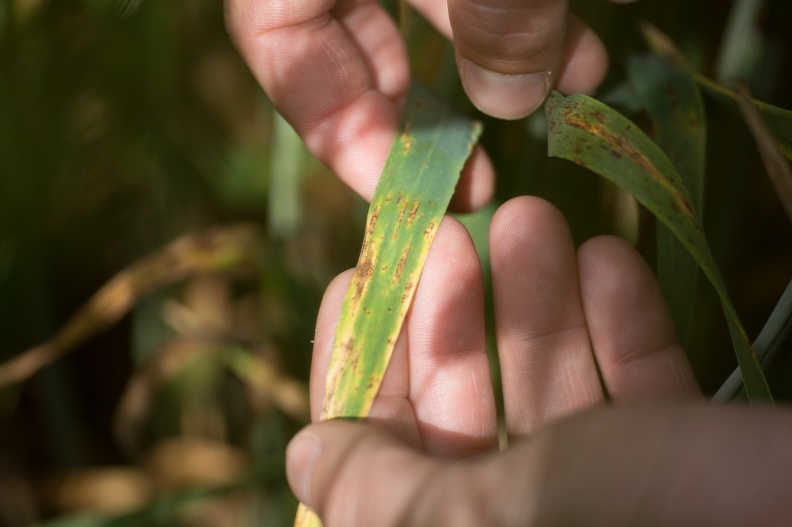
© Nadège Petit
By the time brown spots rimmed with yellow are detected along the veins of wheat leaves in Spring, it’s already too late! By that time the disease has become well established and the wheat yield will suffer!
Controlling Septoria is a preventive strategy that now combines all the agronomic pillars of crop protection: sowing tolerant varieties, adjusting fertilization, biocontrol, agrochemicals, digital technologies, longer rotations!
Evolution of the strategy to protect wheat from Septoria between 2000 and 2023
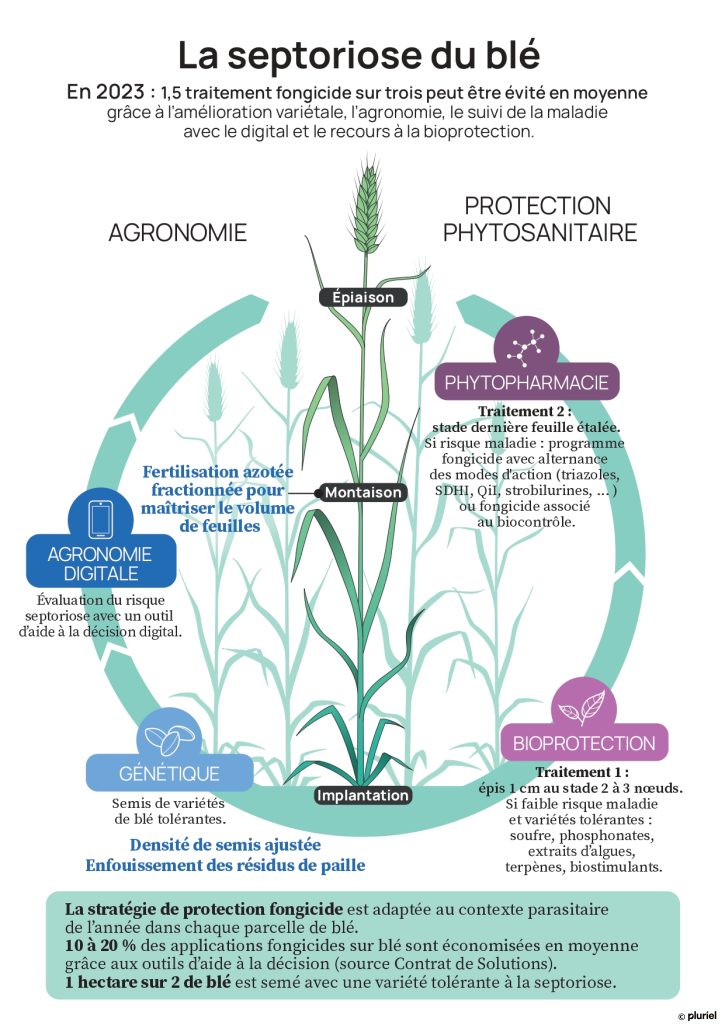
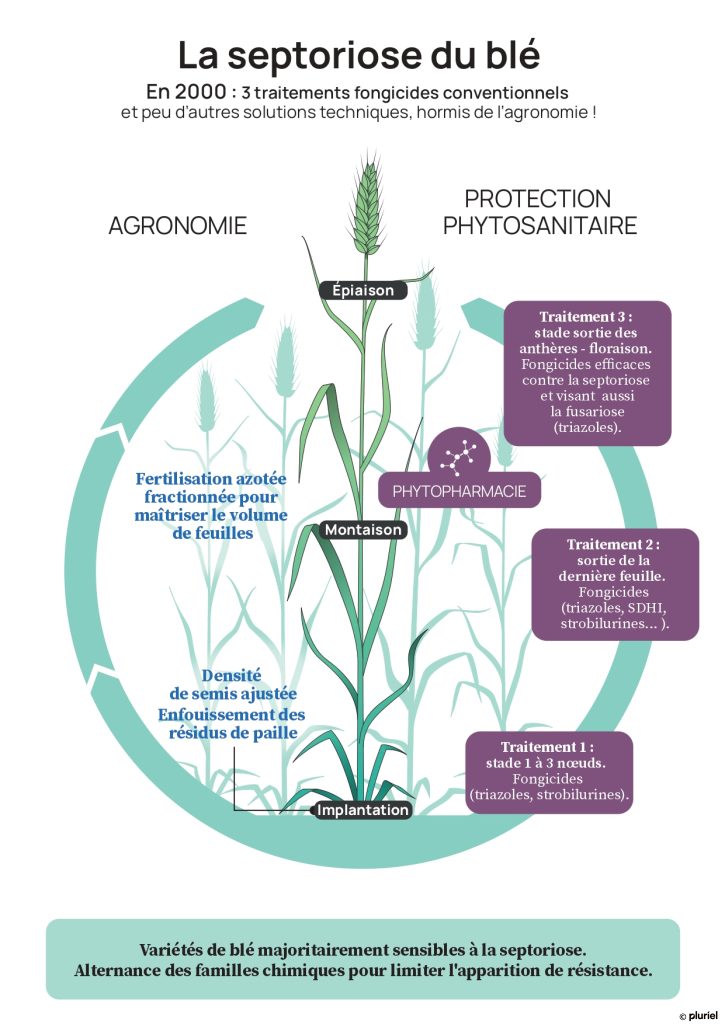
In 2030: Varieties more tolerant to Septoria are available as are more bioprotection solutions and high precision spraying to reduce the amount of fungicides used.
- Range of bioprotection solutions, expanded with micro-organisms among others. Increased use of biostimulation.
- Role played by the soil microbiome is encouraged, a hot research topic.
- High precision spraying: this technological revolution is a long-awaited solution that limits application to target plants.
- Modulation of the dose rate of plant protection product within the plot thanks to satellite imagery and artificial intelligence.
- Hybrid wheat even more tolerant to Septoria is arriving on the market.
Matthieu Preudhomme, agronomic consultant for Somme’s Chamber of Agriculture
Genetic progress and agronomic levers: vital to the protection of wheat against diseases.

We are confident in our control of Septoria and are assisted by global warming, genetics and agronomy. These are powerful levers. Nevertheless, a safety net will have to be maintained with the contribution of conventional agrochemicals.
More agronomy in farming practices, one of every two hectares sown with Septoria-tolerant wheat, elimination of the first fungicide treatment when possible: the shift is under way to reduce the use of agrochemicals on cereals. In areas with high production potential, fungicide-based protection remains of economic interest.
Septoria is a disease that depends primarily on weather conditions in the Spring. “This is the reality in the field,” says Matthieu Preudhomme, agronomic consultant for Somme’s Chamber of Agriculture. Steady rains foster the disease. So, as he analyses the 2022 season marked by a rather dry Spring, he notes that a majority of the sixty farmers he follows correctly applied only two fungicide treatments at reduced dose rates, while 20% applied only one.
A single fungicide treatment but at a later date
The new trend in the area? The first treatment (T1) is eliminated whenever possible and the second treatment (T2) is applied at the ear formation stage, i.e. the booting stage: “This mean combining T2 and T3″. This was a welcome shift in June 2022, because the end of the cycle was quite rainy. As for T3, while a protective boost against Septoria, it is still traditionally applicable for fusarium. As another element in wheat protection strategies, digital technologies model the evolution of the disease, giving farmers a tangible point of reference to decide whether fungicides are needed.
Genetic progress and agronomic levers: vital to protection
The fact remains that this evolution in farming practices is, first and foremost, the result of genetic progress. “A little over 50% of the wheat sown in France is relatively tolerant to this disease,” he reminds us. The second lever has more to do with agronomy. There are preventive solutions that make it more difficult for the fungus to take hold. “If sowing is not too early in the season and the seed rate is controlled, it is possible to prevent an overabundance of leaf biomass in the Spring, a factor that fosters the spread of infection.”
Split applications of nitrogen fertilizer are then applied throughout the crop cycle to limit the number of leaves but without compromising plant growth. “Implementing these strategies results in unfavourable conditions for Septoria,” adds the consultant.
Different strategies depending on production potential
It’s all about the pedoclimatic context and production potential. In Hauts-de-France, high yields encourage consultants and farmers to seek an economic optimum. “The strategy cannot be the same on farms in regions where production is 40% lower than on ours,” he explains. After having activated all the agronomic levers, he believes that striving to produce an additional 0.3 tonnes using fungicides on a plot that produces 11 T/ha is a financially sound decision. The investment in fungicide amounts to approximately €30 / ha and the 0.3 tonnes are worth €90. Ten years ago the cost of protection was closer to €100/ha but there were fewer combined options.
Farmers are becoming increasingly receptive to bioprotection methods
In the last four or five years, Matthieu Preudhomme has noticed a change in mindset. He notes that “there are many farmers testing biocontrol solutions on wheat, potatoes and beets “. They are more receptive despite mixed results.” He believes that bioprotection today, less effective than chemical control, makes more sense in the strategies aiming to reduce the number of fungicide treatments called for in the specifications. He also notes that companies are investing more heavily in the research for biocontrol solutions. The shift is under way “Farmers who isolate themselves from current trends and blindly continue with traditional practices are destined to become an endangered species. There has been a veritable upheaval in recent years. »
Safety net required
In response to the question of a possible total ban on chemical treatments, he answered: climate! “We are not immune to wet, cold Springs which are favourable to Septoria. The time has come to take political decisions. Either we assume 30% less yield per hectare in the absence of effective solutions with consequences in terms of food sovereignty, or we maintain safety nets with an ample portfolio of plant protection solutions. Nature is neither good nor bad; we need to control it while also respecting it,” he concludes.
Jonathan Nonnotte, Biosolutions Facilitator at Soufflet Agriculture
"Biosolutions together with plant varieties and crop rotation minimize the risk of disease."
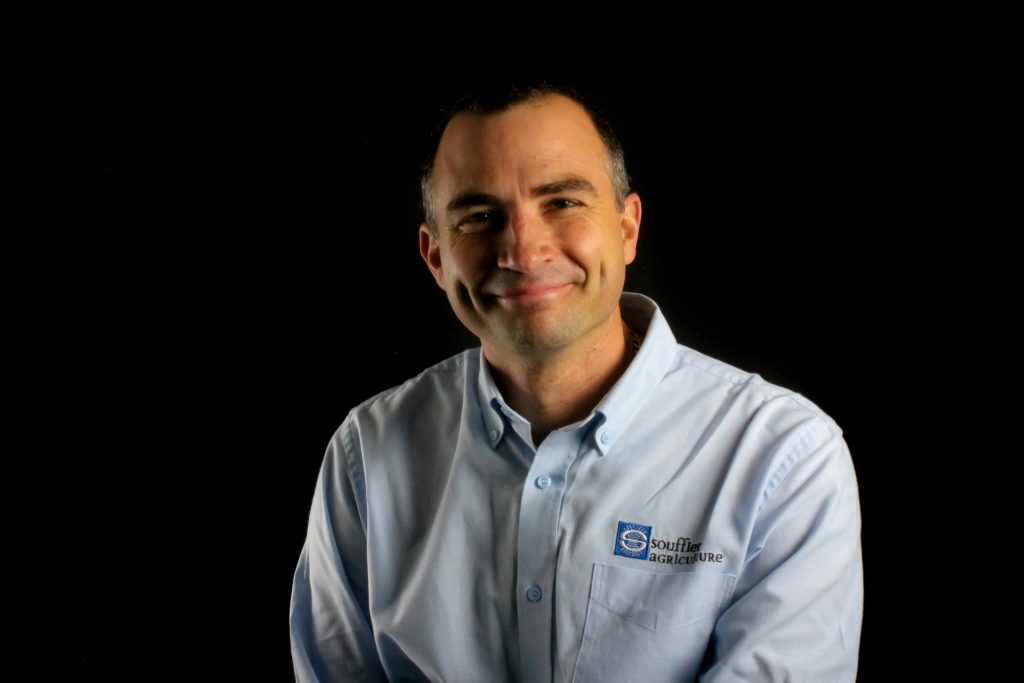
Biocontrol and biostimulants to protect wheat against Septoria will primarily be used on fields with medium yield potential. The effectiveness of biosolutions against rust has also been studied.
Combined with other agronomic solutions, the biosolutions advocated by Soufflet Agriculture are now integrated into fungicide programmes to protect wheat against Septoria. They have proven effective in the experiments conducted by this agricultural distributor over a period of three years.
“Wheat protection against Septoria must take biosolutions into account,” says Jonathan Nonnotte, biosolutions and foliar nutrition team leader at Soufflet Agriculture. We need to approach these solutions in a positive way.” How? “By countering traditional thinking with evidence on their efficacy and by reducing the use of conventional fungicides.” The objective is to replace the first conventional fungicide treatment against Septoria applied in March with natural solutions.
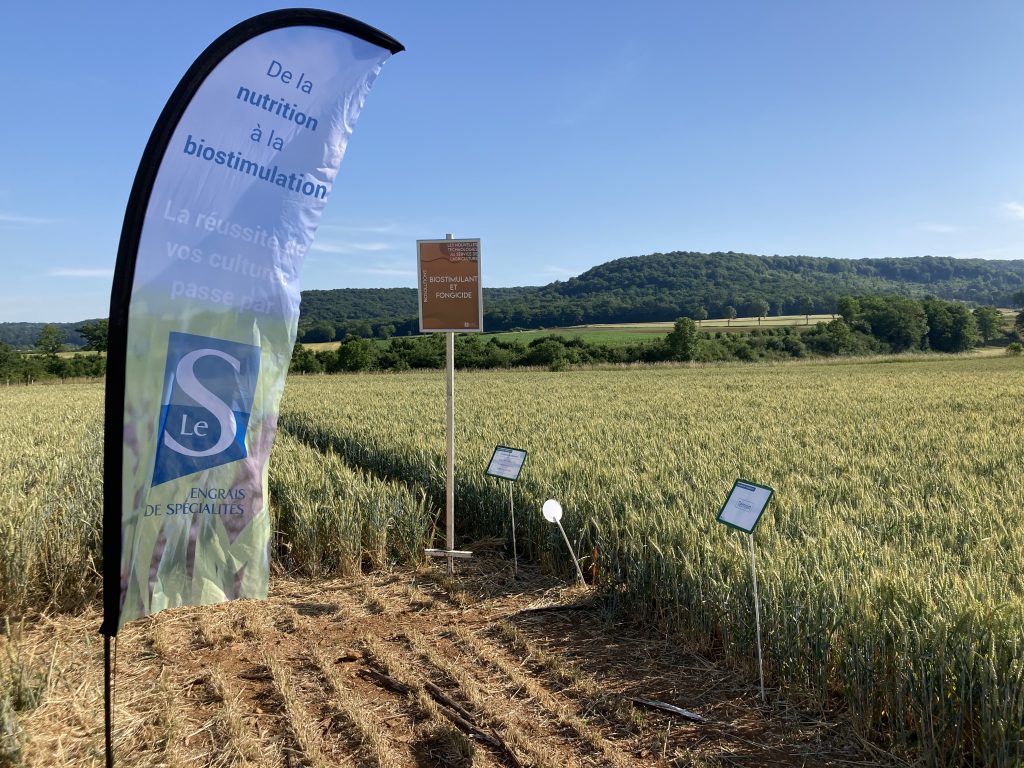
Bioprotection solutions have been tested by Soufflet Agriculture teams in 14 trials spread over 9 agricultural areas.
Target Septoria early and bolster rust control with biocontrol solutions
Since 2023, Soufflet Agriculture has been offering a range of biocontrol and biostimulation products specifically targeting wheat Septoria, a sign that plant protection based on natural solutions is being used on field crops. These have been developed based on the results of its 14 trials conducted over three years on farms featuring different pedoclimatic conditions. Their efforts focus on stimulating plants’ natural defences against climatic stresses and fungal attacks and prevention. “The biosolutions we have chosen must go hand in hand with varietal selection and rotation to minimise the risk of disease, especially rust, the other leaf disease, ” according to Jonathan Nonnotte. If the goal is to reduce conventional fungicide treatments, biosolutions must be integrated into a farm-wide disease management scheme. For rust-sensitive varieties, combining biosolutions with triazole remains the accepted practice.”
Combination of solutions, the preferred strategy
Biosolutions identified by agricultural distributors often work in combination with a sulphur base: sulphur with a biostimulant such as algae or plant extracts, or sulphur with a potassium phosphonate. “We recommend scheduling treatments starting at the 1 cm ear stage on one of our 15 wheat varieties resistant to Septoria and rust, and on plots with a production potential of less than 7 T/ha“, he adds. Disease pressure is monitored with Syngenta’s Avizio digital model integrated into Soufflet’s digital offer. This provides farmers with peace of mind regarding their choice to apply biosolutions as a first treatment rather than a conventional fungicide.
In the long term, will all farms replace conventional fungicides as the first treatment and turn to biosolutions? “On very high-potential land, i.e. production over 9 T/ha, if the risk of diseases is detected early, conventional chemicals are still recommended for the time being because on average they ensure an additional 0.3 to 0.5 tonnes, notes Jonathan Nonnotte. Everything also depends on the weather. Rain boosts both disease and yield!”
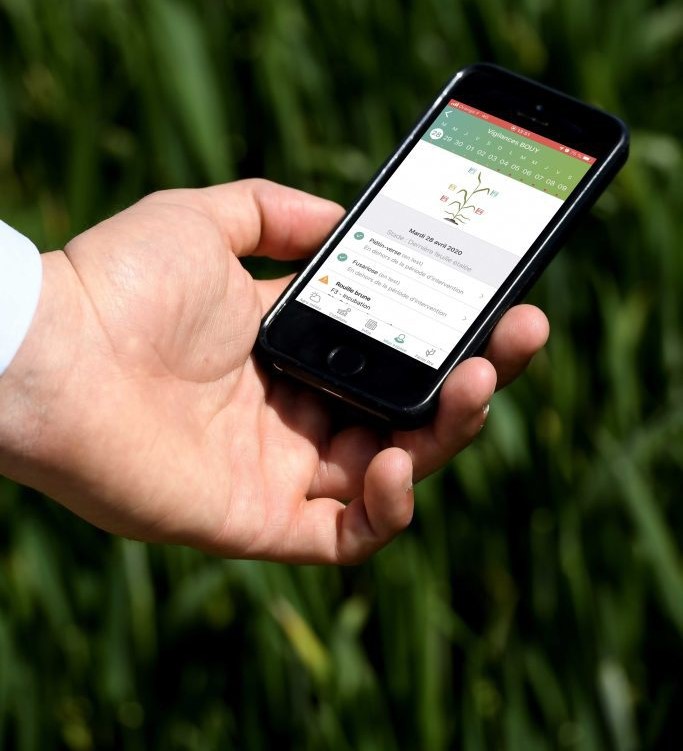
Before eliminating the first fungicide treatment or replacing it with a biocontrol product, Septoria pressure is monitored with Syngenta’s Avizio digital decision support tool. In the event of high risk of disease, conventional fungicides are applied at the appropriate time.
Fungicide trial results for the first treatment (T1) of wheat against Septoria - Soufflet Agriculture, 2021/22 season
| Trial type | Average yield from 5 trials (dT/ha) | Net gain in €/untreated control without T1 | Treatment frequency index |
|---|---|---|---|
| Untreated control | 87,5 | -100 | 0 |
| Untreated control without T1 | 91,4 | 0 | 0,4 |
| T1 100% biocontrol | 93,4 | 15 | 0,4 |
| T1 sulphur and biostimulants | 93 | 29 | 0,4 |
| T1 with conventional fungicides | 94,3 | 24 | 1,7 |
Science – What role can the soil microbiome play in protecting wheat from fusarium?
Interview with Léna Simon, PhD student at the VetAgro Sup school, Thierry Langin, research director at the CNRS in Clermont-Ferrand and Gaëlle Marliac, lecturer - agronomy and crop protection at VetAgro Sup, co-supervisor of the thesis with Benjamin Nowak, lecturer at VetAgro Sup and UMR Territories (INRAE).
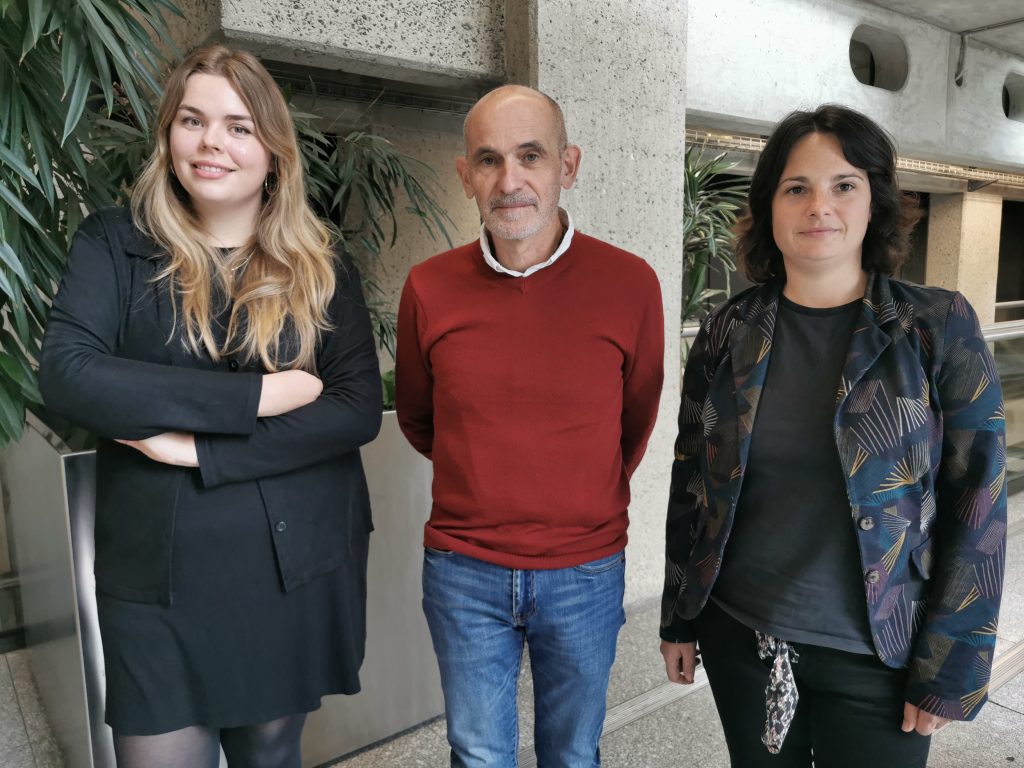
A topic yet to be sufficiently explored, the question of the effect of soil and farming practices on the development of the soil microbiome is the subject of a thesis at Inrae’s Clermont-Ferrand facility. First, interactions of fungi responsible for wheat fusarium diseases were studied on plots located on the Limagne plain.
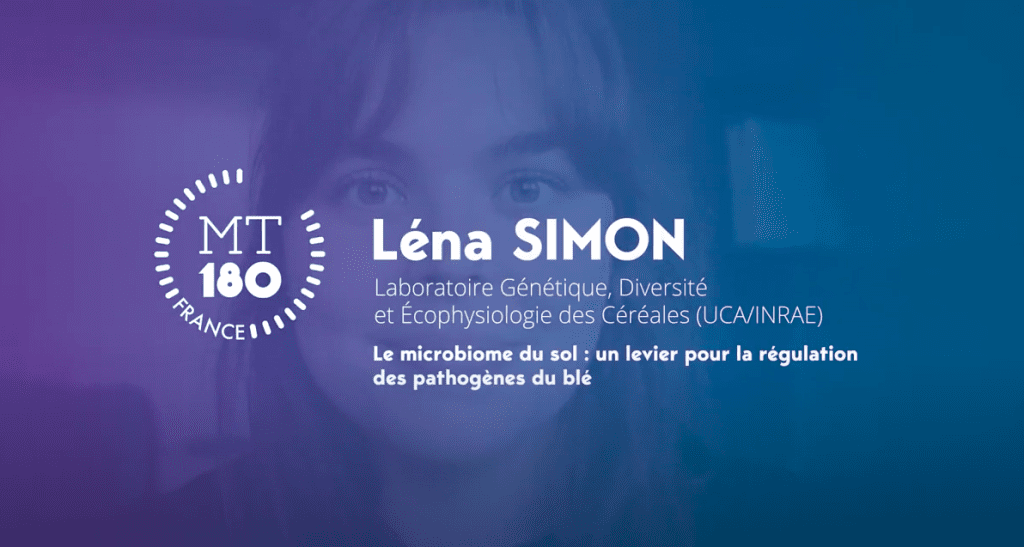
Some of the soil microorganism communities living near the roots play a beneficial role in plants’ ability to defend themselves against pathogenic fungi and bacteria. Could farming practices and soil types naturally promote the action of these allies to protect crops? This question is the topic of Léna Simon’s thesis at Inrae’s Clermont Auvergne-Rhone-Alpes facility, the preliminary results of which were presented on 4 October 2022 at the Phloème conference in Paris, at the Cité des sciences et de l’industrie.

Thierry Langin, CNRS research director at Clermont-Ferrand.
What area of research does the thesis work of Léna Simon, a student at VetAgro Sup, fit into?
Thierry Langin, CNRS : Léna’s thesis is linked to the work being conducted by the “Cereal Diseases” team that I lead within the research unit called “Genetic Diversity and Eco-physiology of cereals (GDEC)“, part of Inrae’s Clermont Auvergne-Rhone-Alpes facility. This team is exploring different ways to sustainably control crop pests while trying as much as possible to avoid plant protection products. The objective is to maximize wheat’s natural immunity mechanisms. Our goal with this thesis is to define an optimum root microbiome for wheat. This is a first step.
What is the role of the microbiome and how does it interact with crops?
T.L. : 452 Soil microorganisms can form a natural barrier against pathogens. We cannot change the soil. We only know that it impacts the composition of the microbiome, but that’s not the only factor. The farming system and wheat variety also exert an impact. By better understanding the impact of practices and varieties, we will be able to activate several levers to mitigate the negative effects of anthropogenic activity on the soil microbiome. The idea is to promote, or even strengthen, the natural barrier effect of the soil microbiome.

Léna Simon, PhD student, VetAgro Sup
How have you conducted the experimental part of your work?
Léna Simon, VetAgro Sup : The first part of my thesis focuses on the effects that microorganisms present in the soil have on fusarium spores infecting soft wheat. We grow this fungus in the laboratory, in direct contact with the soil samples obtained from the test plots. The samples are taken at a depth of 15 cm when the wheat is flowering. That is when the spores present on the soil surface in the residue of the previous season’s wheat are mature and ready to infect plants when the rain comes. Soils with the most active microbiome are the ones where fungus mycelium grows the least.
What are the different models of agricultural practices being explored?
L. S. : Our samples come from 103 plots from 19 farms located on the Limagne plain and 60 % of those plots employ conventional farming practices. Two farms, or 24% of the plots, are organic operations and 19 practice soil conservation agriculture accounting for 19% of the plots. Some farmers classified as “conventional” follow a sustainable approach and do not systematically resort to traditional methods in terms of types of tillage and plant protection. We also describe their practices in detail.
What are the preliminary results?
L. S. : First of all, our physicochemical analyses have shown significant variability in the soils over a small part of the Limagne plain territory. We found that sandy soils limited fungal growth better than clay soils. We do not yet have data on the mechanism, just hypotheses.
These results are not found in the scientific literature and therefore further analysis is needed. In our sample we did not find any difference between organic, conservation and conventional farming practices. However, each farmer has his or her own farming system.
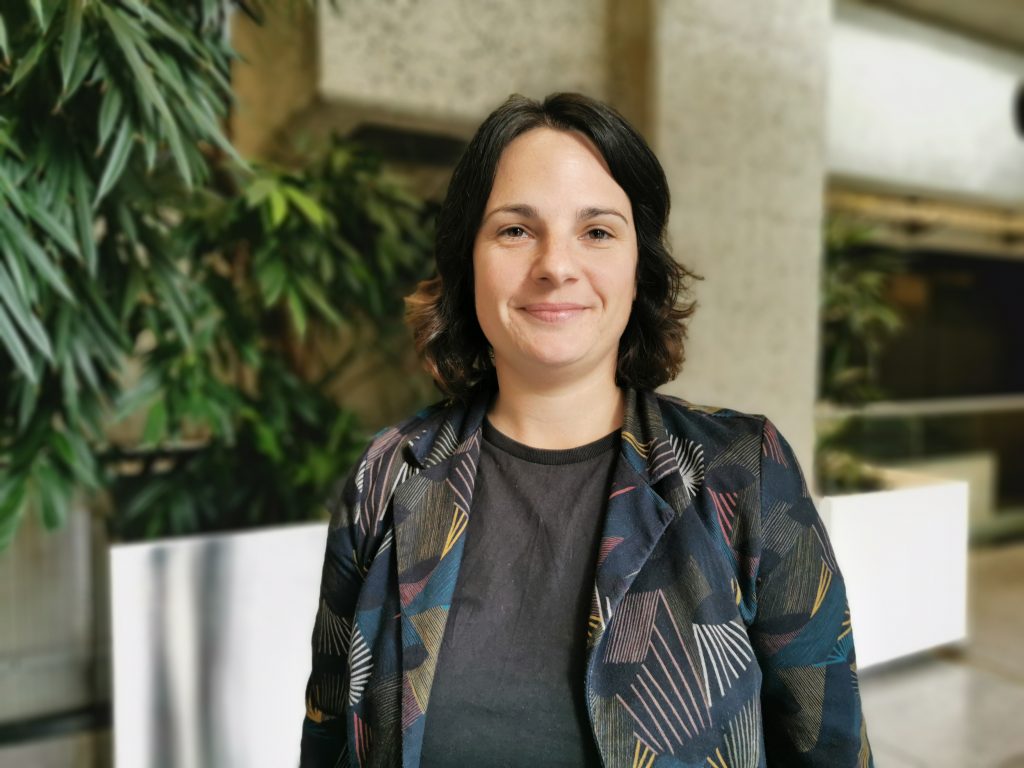
Gaëlle Marliac, lecturer – agronomy and crop protection at VetAgro Sup
Gaëlle Marliac, VetAgro Sup : These initial results show that the main effects on the microbiota are attributable to the nature of the soil and not to farming practices. Some soils are able to completely limit the growth of the pathogen while others are more permissive but we do not know why.
What is the next step after these initial findings?
Léna Simon : In the second part of my thesis, I will attempt to understand the interactions between the soil and plants in terms of the symptoms observed. We know that there is an ongoing dialogue between the microbiota and the plant and that the soil microbiome can change if the plant responds to infection. To understand how the microbiome changes during the course of an infection, it will be sequenced in our trials before and after a fusarium infection of a single wheat variety. These studies are being conducted on soils that have been shown to significantly inhibit fusarium as well as on soils exhibiting little inhibitive activity, with a view to detecting possible differences. Results in one year.
Thierry Langin : We need to move from a descriptive study of the species present in a microbiome to a more functional vision of these communities, and to a better understanding of the interactions between the biological component of the soil and the plant. In the long term, this more functional vision will help us reactivate genes and functions in wheat varieties that promote synergies with soil microorganisms. The idea is also to demonstrate that this natural soil protection mechanism is also effective against other diseases, such as Septoria and rusts.
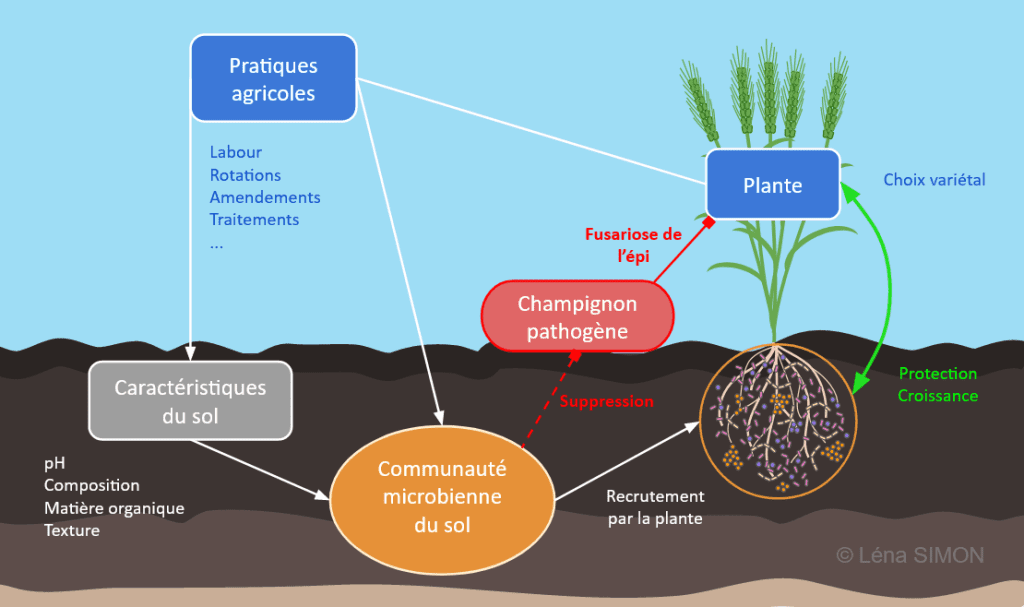
Practices – What are the prospects for deploying robotics and high-precision spraying?
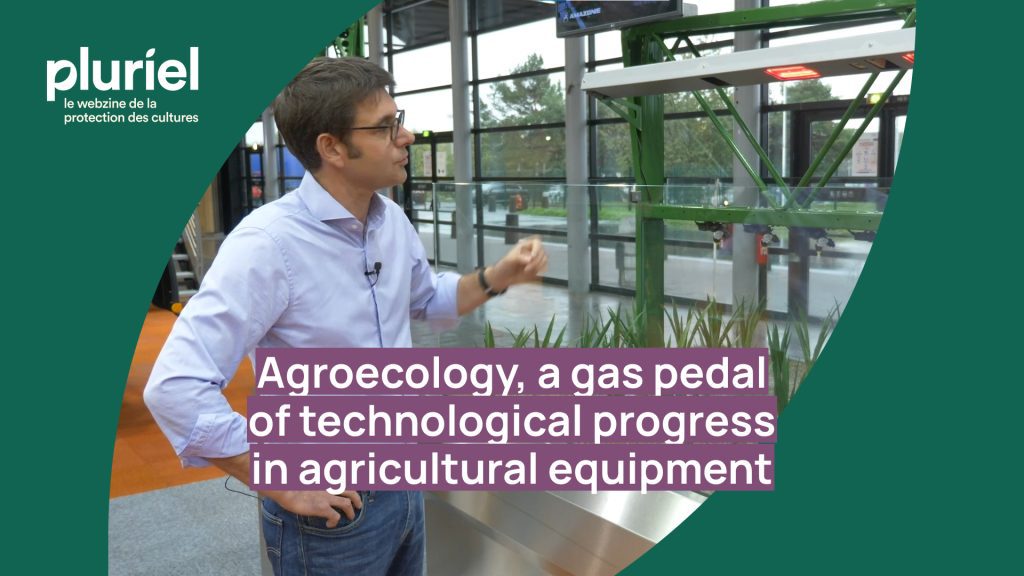
Fewer plant protection products applied to crops thanks to artificial intelligence and digital technologies; the trend is promising in agricultural machinery. What does the supply side look like?
Responses from the manufacturers Ecorobotix, Exxact Robotics and Amazone, the crop protection company BASF Agro, the associations RobAgri, Axema and the network of Digifarms collected during the “100 years of SIMA”. This international agribusiness trade show was held from 6 to 10 November 2022 at the Paris Nord Parc des Expositions Convention Centre.
Regulatory – Deciphering the main texts and legislative proposals in Europe and France
A regulation on the use of plant protection products compatible with sustainable development, a legislative framework on new genomic editing techniques (NGT) and an evaluation guide on bees are the big issues being tackled by the European Commission in the first half of 2023 as concerns crop protection.
In France, the consultation process to draft the Pact and Law on agricultural guidelines and the future began on 20 January.
Another news-worthy story is the ban in Europe on exemptions regarding the treatment of beet seeds with certain neonicotinoid substances.
Europe
SUR Regulation (Sustainable Use Regulation): impact study under way
The European Commission submitted draft regulation SUR (2022-0196) in June 2022 which is Intended to replace the EU’s sustainable pesticide use directive (2009/128/EC), implementing the farm to fork strategy of the European Green Deal.
At the end of December, the Council of Europe called on the European Commission to provide greater detail on the impact this regulation will have on agriculture. A report is expected at the last Council meeting of the Swedish Presidency on 26 and 27 June.
The objective remains to reduce the risk of using plant protection products in Europe by 50%. This European text has important implications for each Member State and for farmers. How will sensitive areas, i.e. where plant protection treatment is banned, be defined? What is the reduction target per country? The obligations related to the registration of integrated crop protection imply justification of the method used. This adds to the already substantial administrative burden that small and medium-sized farms must endure.
Genome Editing Regulations: legislative framework submitted in June
The European Commission is expected to present the legislative framework on new genomic editing techniques (NGT) on 7 June. The text will define the specific risk assessment framework for plants derived from site-directed mutagenesis (genome editing) and cisgenesis.
The GMO regulation drafted in 2001 does not consider techniques that do not add foreign DNA to plants and which may resemble spontaneous or induced mutations.
This text should be included in the “Sustainable Agri-Food Systems and Resource use” legislative package, together with the Soil Act and an amended version of the Waste Act, together with new seed legislation, grouping together the current 13 directives.
Registration: new guidelines on bee assessment in 2023
Ten years after EFSA began overseeing the work, the notice regarding the new bee and pollinator assessment guides (Bee Guidance) is expected to be published this semester. The guides will enter into force in September 2023.
Bioprotection: adapting evaluation to scientific knowledge
The European Commission already adopted four texts in September 2022 to speed up authorisation procedures for bioprotection products composed of micro-organisms. This progress is linked to an improvement in scientific knowledge on the biology of these organisms.
Ban on exemptions concerning the use of certain neonicotinoids in seed treatment
A ruling of 19 January 2023 delivered by the Court of Justice of the European Union (CJEU) determined that it was illegal to grant exemptions under Article 53 of Regulation 1107/2009 for the treatment of seeds with certain neonicotinoid substances. The CJEU cannot grant authorisation under Article 53 if the placing on the market and/or external use of treated seed has been expressly prohibited in Europe by an implementing regulation.
Study on macro-organisms
Published in December 2022, the study on “the situation and options regarding the introduction, production, evaluation, marketing and use of invertebrate biological control agents” is on the agenda of the Agriculture Council on 20 March. It specifically refers to a list of authorised macro-organisms and the harmonisation of evaluation rules at European level.
France
Pact and Law on guidelines for the future of agriculture, texts expected in June
Announced by the President of the French Republic during his visit to Terres de Jim on 9 September, the Pact and Law on guidelines for the future of agriculture (French acronym PLOAA) are expected to be presented in June. Consultation sessions began on 20 January and will consist of: a national public consultation, a regional consultation, and a survey of students of agricultural studies to take place before texts are drafted.
First strategic Council on crop protection, no later than the end of 2023
The Order of 24 April 2019, resulting from the “EGAlim” law of 30 October 2018, requires farmers to hold two strategic councils over a five-year period, to take stock of the situation and draw up an action plan. Said council entails a diagnosis of farm operations. The first council must have been held by the end of December 2023.
It should be noted that according to the current version of the draft SUR regulation, this council may be renewed every year.
Fee for nonpoint source pollution, 2023 scale
The Order published in the OJ of 30 December 2022 updates the list of substances contained in plant protection products to which the nonpoint pollution fee will apply in 2023.
The list of active substances subject to the nonpoint pollution fee was published in the Official Journal of 29 December 2022 and entered into force on 1 January 2023.
End of exemptions regarding the treatment of beet seeds with neonicotinoids
Following the judgment of the Court of Justice of the European Union of 19 January 2023, on 24 January the Minister of Agriculture renounced an exemption request to treat beet seeds with neonicotinoids.
Young farmers, the innovations generation!
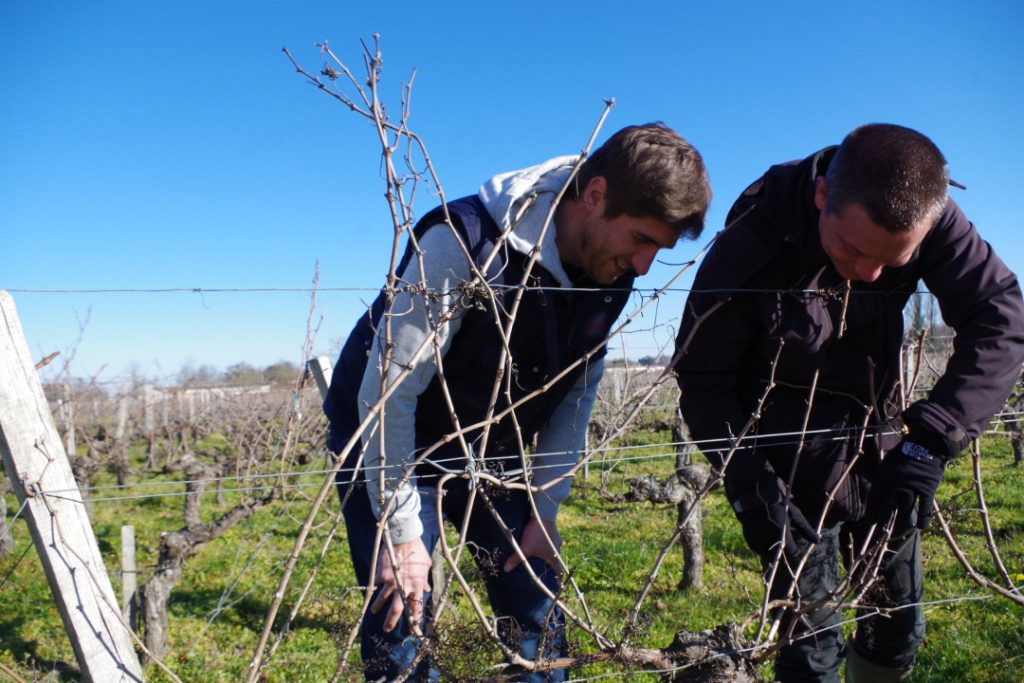
France is facing an unprecedented challenge: that of finding replacements for generations of agricultural workers. Over a third of the country’s farmers will be retired in 2030 which is why a European road map has been drawn up to address crop protection. Agricultural production models must evolve towards a reduction in the use of pesticides. How do young people fit into this strategy?
If young farmers continue the agroecological transition initiated by their elders, they will be more open to innovation. Biocontrol, digitisation, machinery, genetic breakthroughs…; students and young farmers are seeking more resilient agricultural models to address climate change. From the economic point of view, starting in 2023 increased aid will be made available for those who choose to follow this path. Nevertheless Arnaud Gaillot, president of the Young Farmers Association, reminds us that food sovereignty must remain the guiding principle as the baton is passed from one farming generation to the next. This means having several different production solutions in the toolbox to sustainably protect crops while preserving the environment. Within the framework of the Pact and Law on guidelines for the future of agriculture, he hopes to see initial training bolstered to better understand innovation and more public research.
Arnaud Gaillot, president of the Young farmers trade union: « Young people must be given the keys to economically viable farming in the face of the challenge of climate change. »
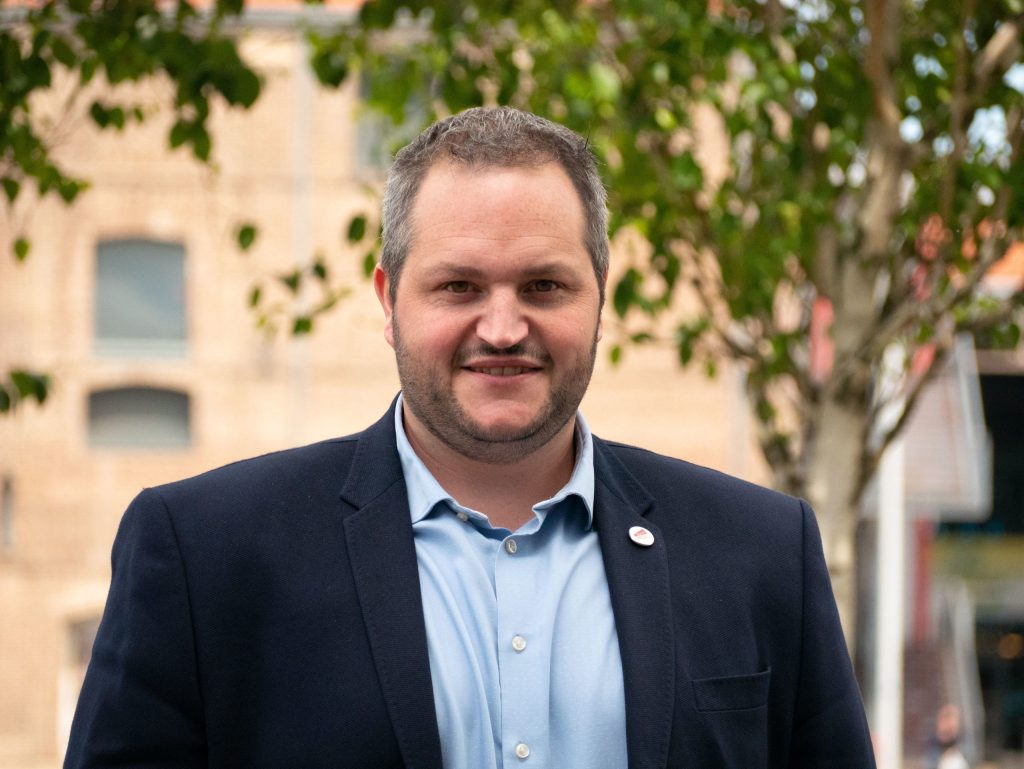
Young farmers have defined the priorities they want to see discussed this Spring during the consultations preceding the Pact and Law on guidelines for the future of agriculture. Food sovereignty, adaptation to climate change and the agro-ecological transition must guide young farmers as they take over operations.
According to Arnaud Gaillot, dairy cow breeder in Doubs and president of this union and of the endowment fund Terres Innovantes, better knowledge is the key for young people to be better equipped to face technical, agronomic and economic constraints. With good tools, including crop protection solutions, they can earn a sustainable living from their profession.
What is at stake in the Pact and Law on guidelines for the future of agriculture?
Arnaud Gaillot : As a massive number of farmers will retire by 2030, the challenge is to keep farms up and running throughout the country. Two things need to happen: increase aid for the transmission of farms and facilitate retirements. These are prerequisites if we are to preserve our food sovereignty. Young people taking over farms also need to be familiar with the agricultural models of the future in order to become engaged. How can we lure them to the profession if the roadmap is not clear? Farmers do not take a vow of poverty! It is also vital to hand down economically viable farms to our young farmers. As a union, our duty is to be realistic and not create any false expectations.
Land is so diverse in France that there is no one single agricultural model. Young people who take over farms must have access to the means to fight climate change and the evolution of pests, and to be able to accelerate the agroecological transition without compromising production. This is where research plays a vital role. Moreover, the knowledge that young people bring to the farm will be decisive in solving the many technical, agronomic and business management problems they may face.
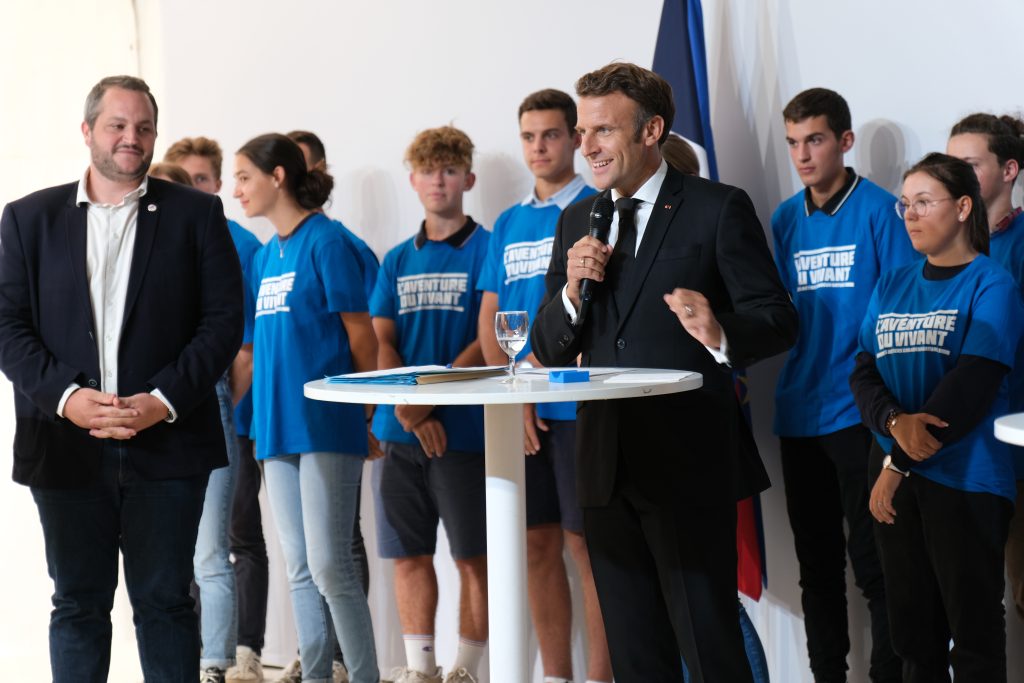
© JA mag – inaugurated on 9 September in Outarville (45) during the annual young farmers event known as Terres de Jim by the President of the French Republic. The Pact and Law on guidelines for the future of agriculture will commence its consultation phase this Spring in the regions with all stakeholders called on to present a comprehensive package before June.
Training is one of the four pillars that have structured your work that began on 19 January in the framework of the PLOAA (Pact and Law). What specific proposals do you have?
A. G. : We want young people to be as prepared as possible when they leave school. Many parts of school curricula have been abandoned, as have parts of the economy. Other disciplines, such as digital technologies and mathematics, need to be reinforced. A working knowledge of maths is essential at all levels of agricultural business, especially to calculate frequency indicators for plant health treatments or to understand whether a treatment is in a farmer’s best economic interest.
As for agronomic issues, climate change is the backdrop to the pragmatic teaching of new practices. Lastly, another important point for young people: stay informed about everything related to innovation such as biocontrol.
Of course, nothing ever stands still; the farming profession is constantly evolving. They must also get on board with the idea of life-long learning because that is the key to success.
What ideas should the term “agroecology” conjure up in the minds of young people?
A. G: Agroecology is becoming a catch-all word. I am not sure that everyone has the same vision or definition. During their entire career, young farms need to constantly question whether they are on the right path. Is my production suitably adapted? Should I shift to a different farming system? Should I change tools? I don’t suggest telling young farmers what they should do. We should provide them with all the elements needed to take good informed decisions.
Eliminating pesticides is laudable, but such a decision has technical and economic consequences that new farmers may not be familiar with.
What do you think the future holds for crop protection?
A. G. : What I know is that we do not have the right to put our food security in danger. Research is needed to achieve this objective. I have great faith the progress that can be made through varietal selection. But Europe has closed its doors. For us, genomic editing techniques will have to be authorised sooner or later. Therein lies a solution to climate change and plant disease.
On the plant protection side, before banning certain molecules we need to make sure that we know whether we have other crop protection solutions to replace them. The current crisis that organic farming is undergoing is not only due to the decline in consumer purchasing power. Production is facing technical difficulties as well. But it goes without saying that we must also move forward with biocontrol solutions and biostimulants as this is the future. However, I do not believe in the total elimination of conventional plant protection products. I’m a dairy farmer. In 15 years, animal antibiotics have been reduced by 50%. Today we have reached a glass ceiling, especially as diseases are emerging. Avian flu is at levels never seen before.
The vision for the future of young farmers is based on four pillars:
- Provide a greater number of people with better information and training
- Support the transmission of farms to help the new generation
- Modernize support provided for new farmers and access to land
- Provide the means to fight and adapt to climate change
Impediments to the transmission of farms to the younger generations need to be removed. This is what is at stake with the Pact and Law on guidelines for the future of agriculture.
Dupuy Vineyard at Côtes de Bourg
Agroecological transition and innovation
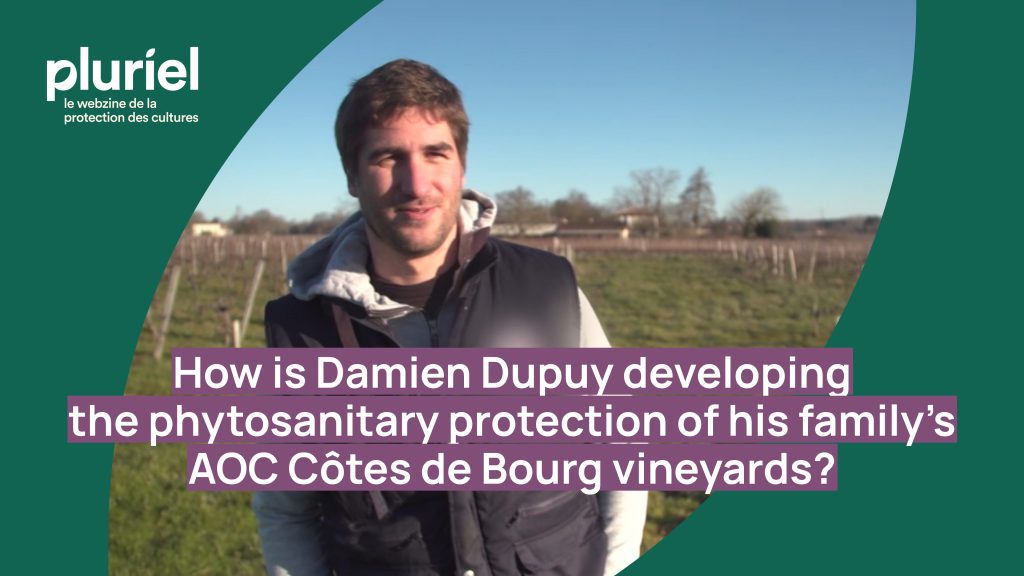
Report on the Dupuy vineyard located in Montbrier (33) and certified as having High Environmental Value since 2018. Since he took over, 35-year-old Damien has taken the company in a new direction and strengthened the agroecological approach. What combination of solutions has he explored to raise the quality and lower the quantity of treatments in his vineyard? How has he benefited from digital technology?
A conversation between Damien Dupuy, vine grower, Thibault Huyghe, technical expert-salesperson at ETS Bayard (Isidore Group) and Manuel Allard, Bayer sales team leader.
In the South, the environment determines aid earmarked for the establishment of new farmers, training and research
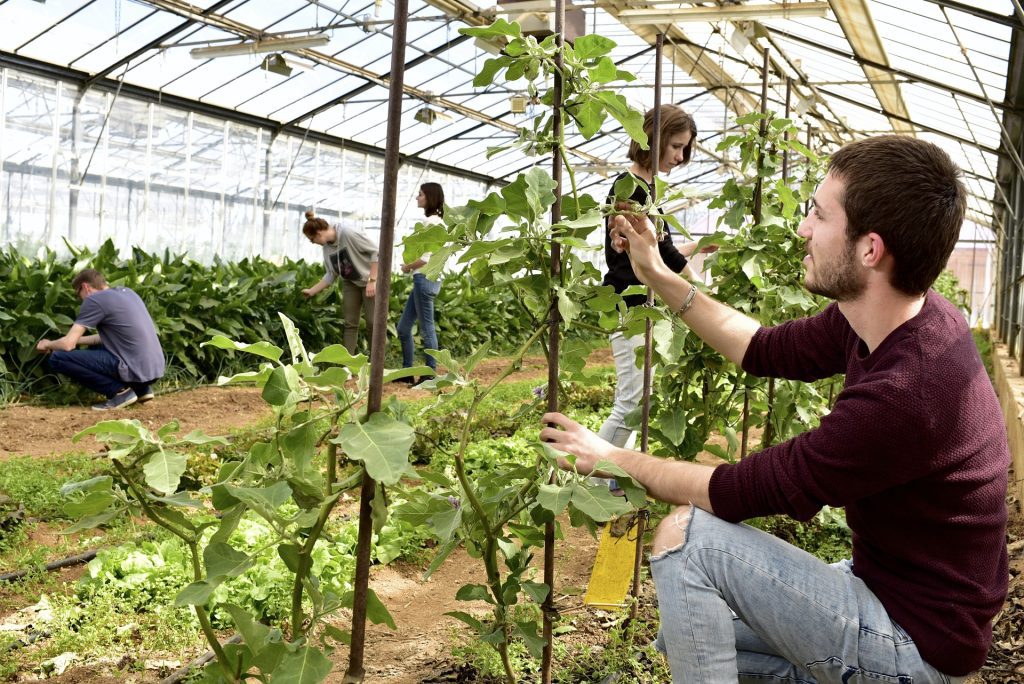
How do the regions support young farmers in their efforts to transform production models? In Provence-Alpes-Cote d’Azur, this issue has already been solved: all subsidies are awarded to those who have started down the path towards ecological transition. A revised version of the Young Farmers’ Allocation (French acronym ADI) will be introduced in 2024, with an early injection of funds in 2023.
Renaud Muselier, president of the South Region, provided more details on the public policies being implemented Provence-Alpes-Cote d’Azur: they will focus on “100% green as from 2023!“. Green means decarbonisation and minimising the environmental footprint that human activity has on natural resources.
Ecological transition contract launched in 2023
According to Bénédicte Martin, Vice-President of the Regional Council of the Southern Region, local agriculture is not lagging behind in this paradigm shift; its ecological transition has been under way since 2015: “Approximately 40% of the farms have already achieved this goal.”
Regional support increased in 2023 with a package of €3 million reserved for farms that engage in environmentally friendly practices. It will come from the funds earmarked in the 2ndpillar of the CAP and the region, and will also be supplemented by the Water Agency. This aid will be paid under the Ecological Transition Contract that the region will enter into with farmers after establishing a diagnosis and defining objectives. Naturally, young people are eligible for the aid and these contracts concern all local production.
This initiative is designed to: reduce agricultural inputs, help farms adapt to climate change, reduce water consumption, implement new technologies, invest in machinery… everything related to crop protection. “We are not advocating zero pesticides whatever the cost, but are seeking the right balance to keep farms sustainable and preserve the environment.”
More subsidies for new farmers depending on the faming practices adopted
Subsidies to help young farmers get started (Dotation jeunes agriculteurs – DJA), delegated to the regions by the State since 1January 2023, is allocated depending on the virtuous practices adopted. For example, a subsidy of 10 %, raised to 12 % in 2023, is granted to farms engaged in agroecology. In practice, this means a sum of between €1,000 and €2,000 depending on the location of the farm. Starting in 2024, a simpler, higher flat rate of €5,000 will be granted to encourage new farmers to adopt these same practices. “Summing up, the Young Farmers Allocation will increase from an average of €24,400 to €31,600 on average per farm”, adds Bénédicte Martin. The National Federation of Organic Agriculture ranks the region among the Top 3 locations “to farm organically in 2023”, proof that it is prioritising its environmental strategy.
An increase in the young farmers' allotment, contingent upon agroecological practices, is being applied in 2023 to promote the transmission of farms and help new farmers settle in. It will be further increased in 2024.

Bénédicte Martin, Vice-President of the Regional Council of the Southern Region. “We have been supporting responsible, sustainable and competitive farming models since 2015.”
Aid earmarked for research and innovation in agricultural high schools
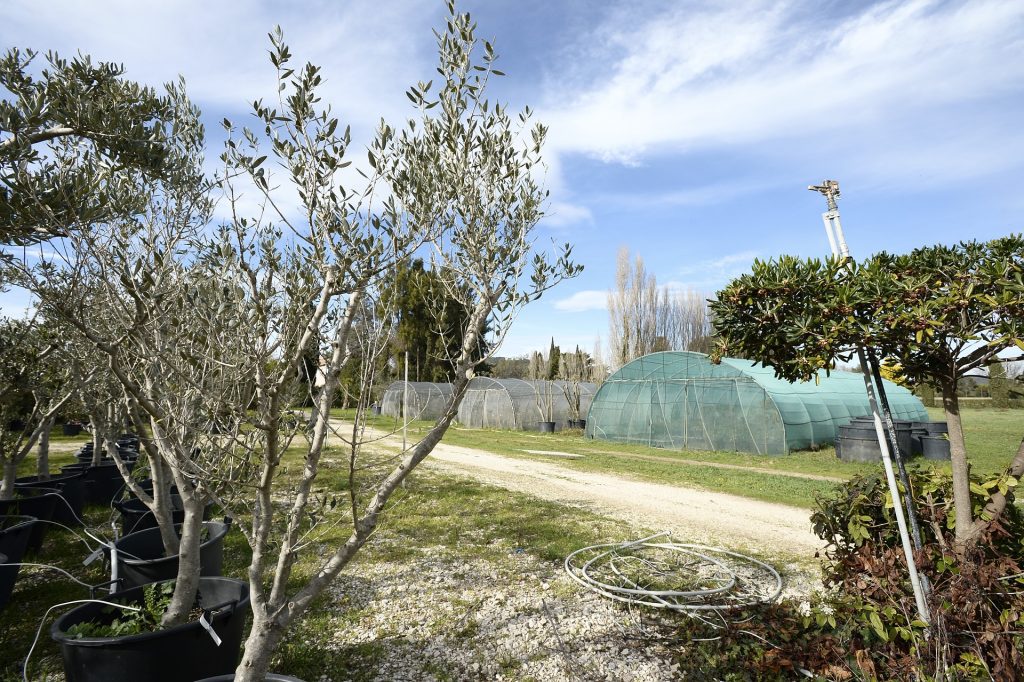
Experimental farms set up at agricultural high schools receive funding from the Southern Region to explore all types of innovation, technological as well as agronomic. Pictured here, the Agricultural Campus in Hyères.
Support also includes research and training to become “100% green” and bring young people on board. “This aid package has been earmarked,” affirms Bénédicte Martin. In agricultural high schools, the emphasis is on making farming less onerous and providing access to crop protection innovation through biocontrol, precision spraying, robotics and digitisation. “National education authorities are responsible for pedagogy per se. We focus on all learning tools and assume economic risk on our educational farms.”
The Southern region’s ten experimental stations, joining together the chambers of agriculture and the different sectors, are the scientific anchor of this ecological transition. Priority is placed on preventive measures and bioprotection to create benchmarks over the medium term. “Today, we do not know how to produce cherry or lavender without plant protection. Some crops have a time frame of 4 to 5 years. We need that same amount of time to come up with alternative solutions,” she insists.
Milestones
The Southern region ranks number one in organic farming, accounting for 35.8% of France’s organic production.
committed to organic farming (206,682 hectares under organic crops including 43,813 in conversion)
(High environmental value)
The challenge of recruiting young farmers set up farms in the southern region
of the farmers is over age 60 and the transmission of their farms is only ensured in half the cases
establishments per year
farming operations in 2020 (-10 % compared to 2010)
on average (+ 7 ha compared to 2010)
The average age of farmers in 2020 compared to 53.7 in 2010, decreasing by one year over the last ten years
Genech institute: for young people, taking over a farm is synonymous to crop protection methods
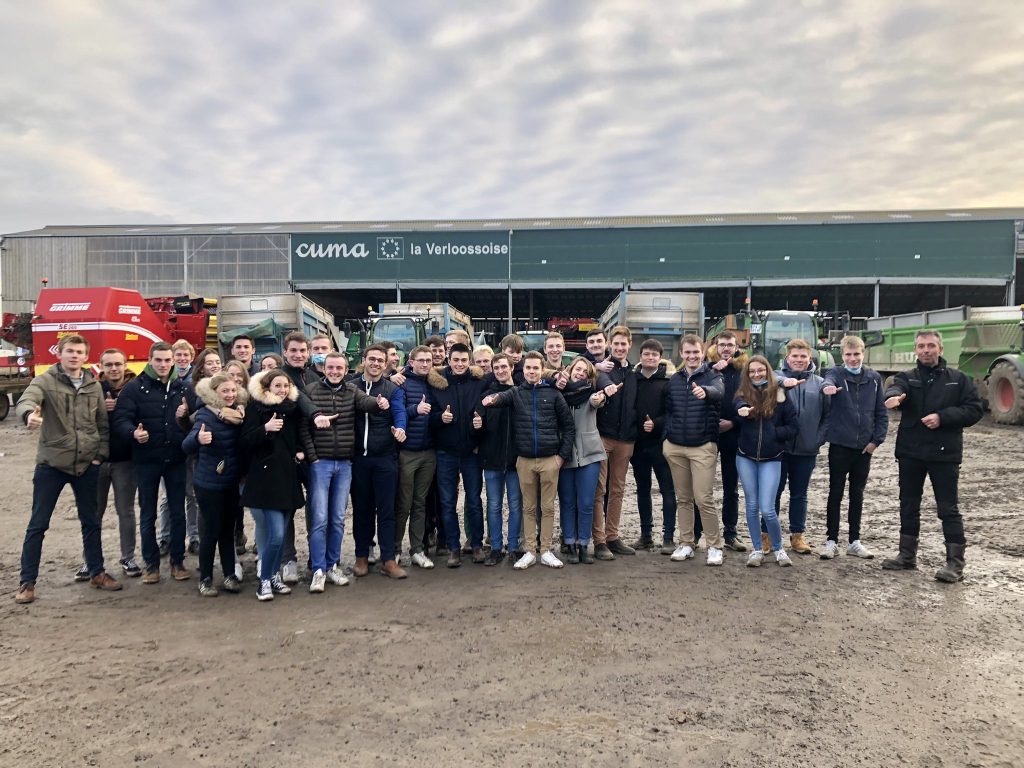
1st year degree in Agronomy and Plant Production at the Genech Institute, class of 2022-2023.
“Contextualise!” is the leitmotif in teaching crop protection at agricultural high schools, the aim being to find solutions related to agroecology. Testimonials of students and Anne Blondeau, professor of agronomy for the degree Agronomy and plant production at the Genech Institute in the North.
“Crop protection is not at all a taboo for young people,” says Anne Blondeau, professor of agronomy at the Genech Institute in the North. The students for the degree Agronomy and Plant Production (APV) see it in a multidisciplinary way combining agronomy, genetics, technology, digitisation, biocontrol, etc.
In this class of 65 students, more than two-thirds are planning to take over the family farm. Some are considering additional training to begin their professional lives with some background in agronomy before taking the baton or embarking upon a dual career. While 75% of the students in this section are boys, it is increasingly receptive to girls.
The young people that are not from the agricultural sector but rather are motivated by the prospects of working with nature and living things, want to be part of the agricultural transition and engage in food and environmental issues. For them, the bottleneck is gaining access to land. They often set their sights on positions such as head of crop management in agricultural operations, technical advisor, or they may enjoy innovation and find work as agronomy advisors, experimental technicians, etc.
Take over the family farm
The aim is not to radically transform their parents’ model of agricultural production. This transformation is taking place gradually. Grass strips, lengthening rotations to reduce the pressure of pests, reducing treatment frequency indicators (TFIs),” this is already happening, says Dimitri Leroux who, after his degree, will further his training as a future farmer with a management degree. “In addition to organic farming, I was taught all the basics enabling me to go even further in reducing the use of plant protection products through digitisation, biocontrol and agronomy.” He also mentions how learning has evolved: “My parents used to over-treat with pesticides. That was how they were taught” he adds. When he takes over the farm, he intends to introduce new crops and develop a mixed farming model, in addition to the dairy cow farm. However, it is still too early to make too many plans.

Dimitri Leroux, studying for a degree in agronomy and plant production. “We should not depend solely on pesticides as in the past, but rather employ several different methods and technologies to address today’s challenges.”
The beauty of digital technologies
Octave Duval will also take over his family’s field crop farm located in Etrépagny, not far from the Saint Louis sugar plant. Investments have already been made on the farm to reduce the use of plant protection products considered an economic burden. The objective is to lower the TFI my modulating crop protection with digital decision-making support tools and precision spraying systems. His eyes light up when he talks about “High precision spraying with cameras that recognise the target plants, it’s revolutionary!”
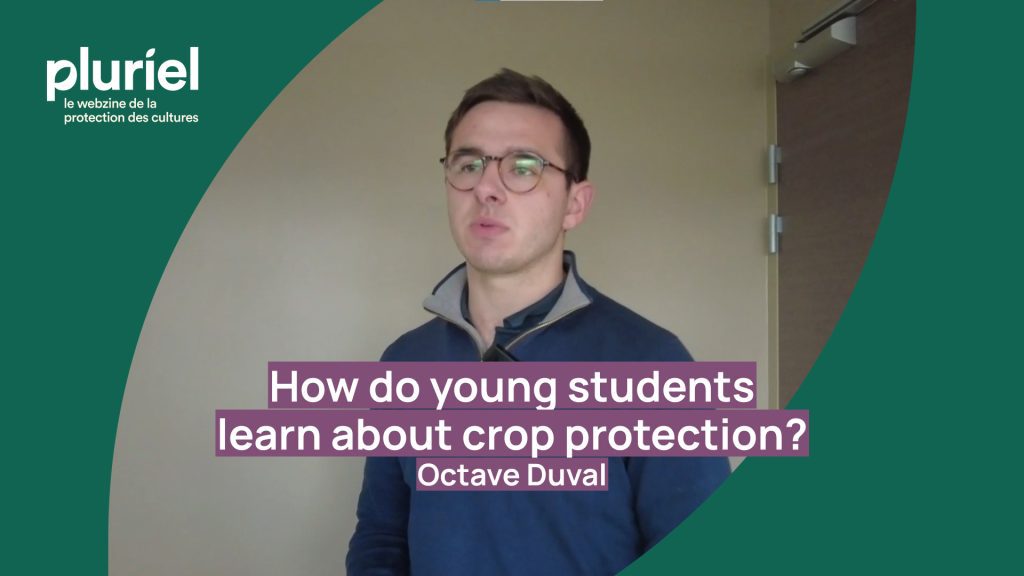
Anne Blondeau, professor of agronomy
«Young people are interested in the principles of agroecology to reduce the use of crop protection products.»
Anne Blondeau has been an agronomy professor for ten years and sees a real change in the attitude of young people, guided by the advent of new standards. “They used to learn how to build a plant protection scheme,” she says. Today, they are very interested in innovation, whether biocontrol, biostimulants, digitisation, etc. and turn to chemical protection only as a last resort. Digitisation and tractor-mounted technologies are particularly popular, although we do have to bring them back to reality from time to time. They also learn to pause and study the data.
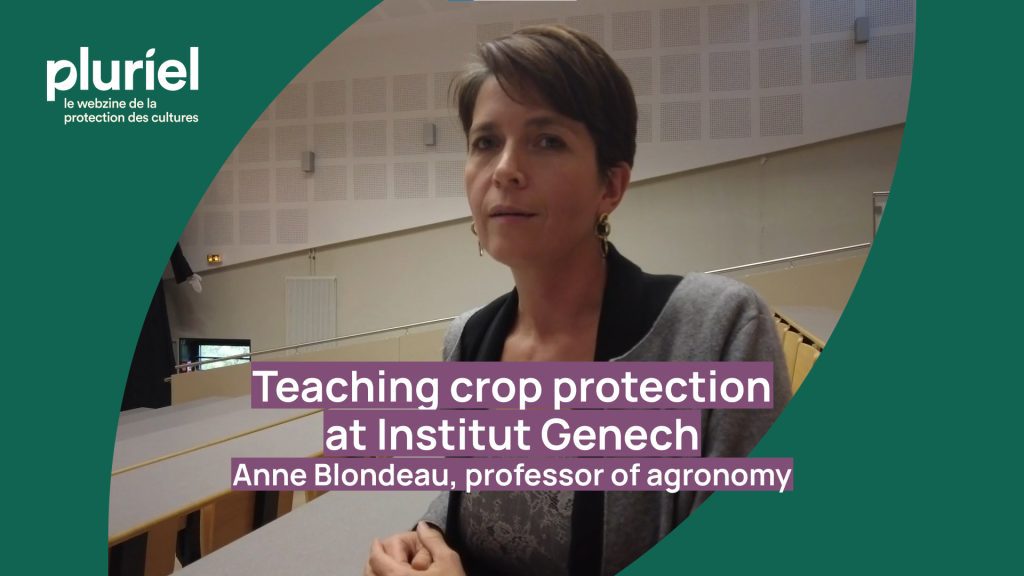
Antonin Pinseel, a second year student of the degree in Agronomy and plant production
« Grandson of a farmer, I live in the town of Bierne near Bergues in the Hauts-de-France region. Being able to work outside, in contact with nature, influenced my inclination towards the agricultural sector. I do not see myself as a farm owner because the price of land is too high in our region. For now, I would like to continue my studies but I want to stay in touch with farmers. After my degree, I would like to go to an agricultural engineering school. If not, I would like to go abroad for a while. As for crop protection, we need to reduce inputs but we cannot turn all farmland into organic fields. Each farm needs to strike the right balance in harmony with each agronomic situation and agricultural model. »

Carte blanche for Nadège Petit, farmer in Villedieu in the French Department of Eure since 2018
We work with living things. We are constantly adapting our farming practices in relation to climate change.
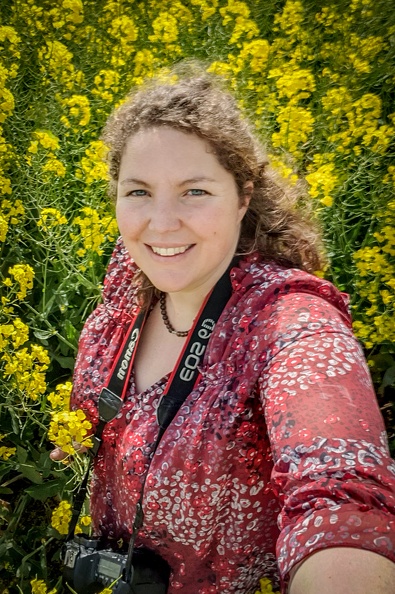
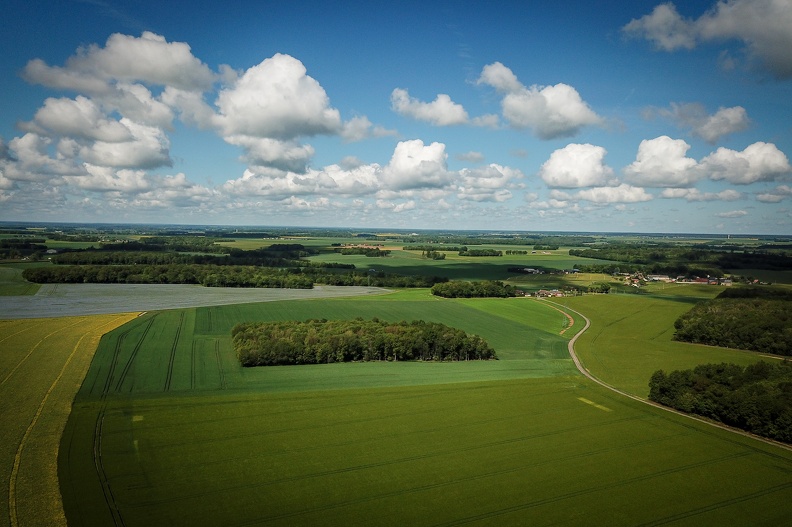
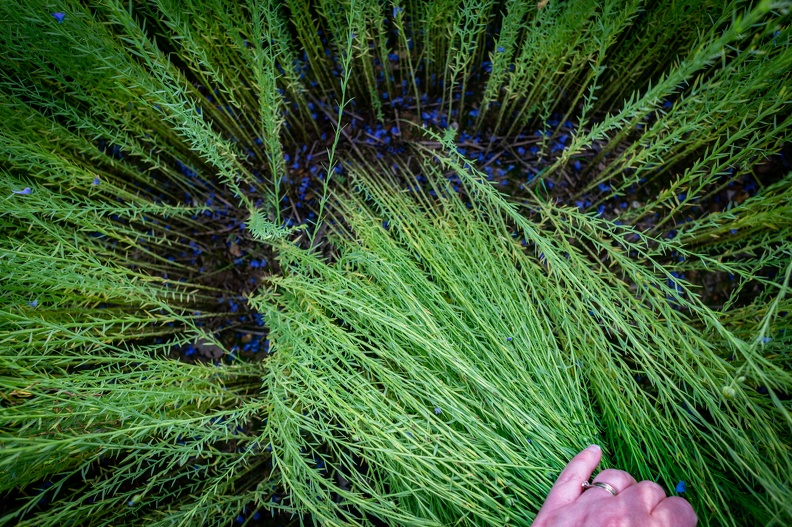
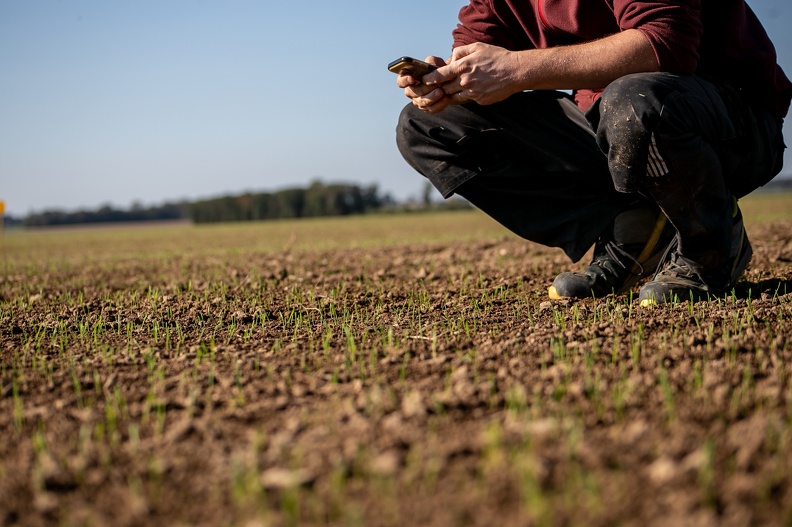
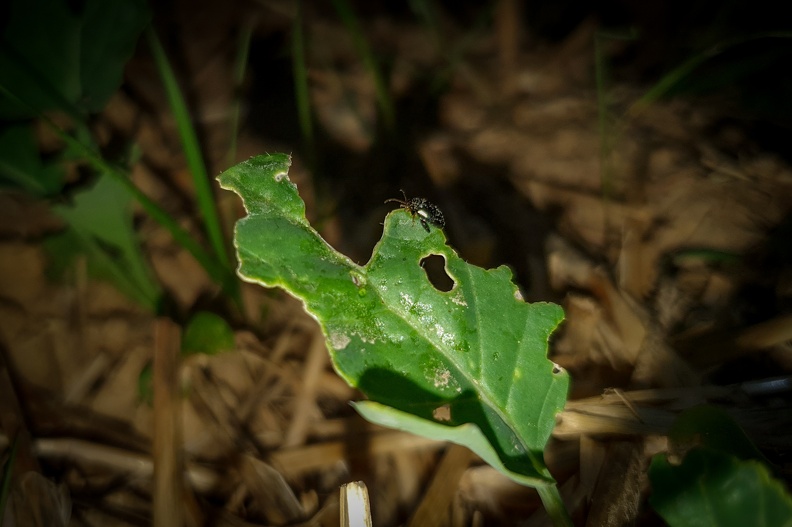
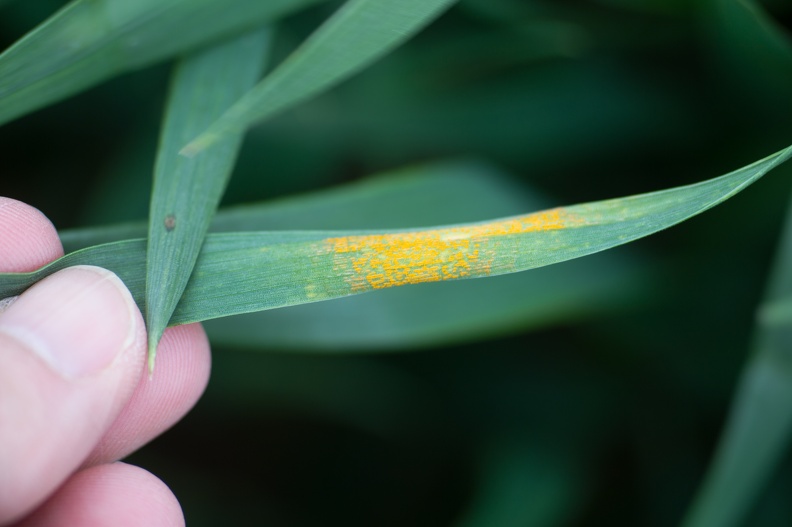
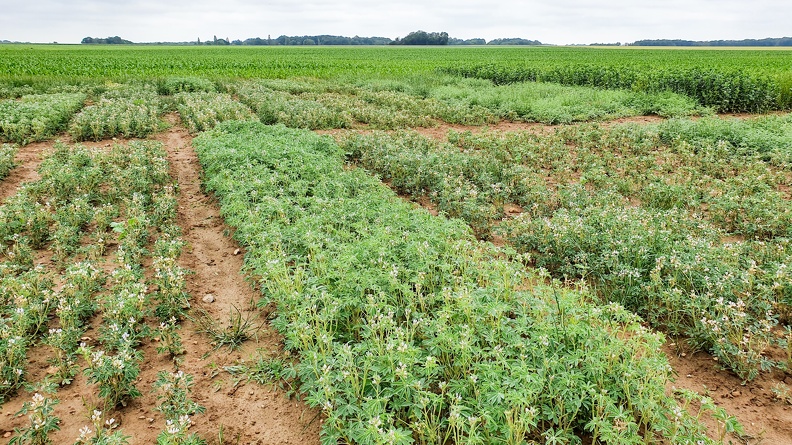
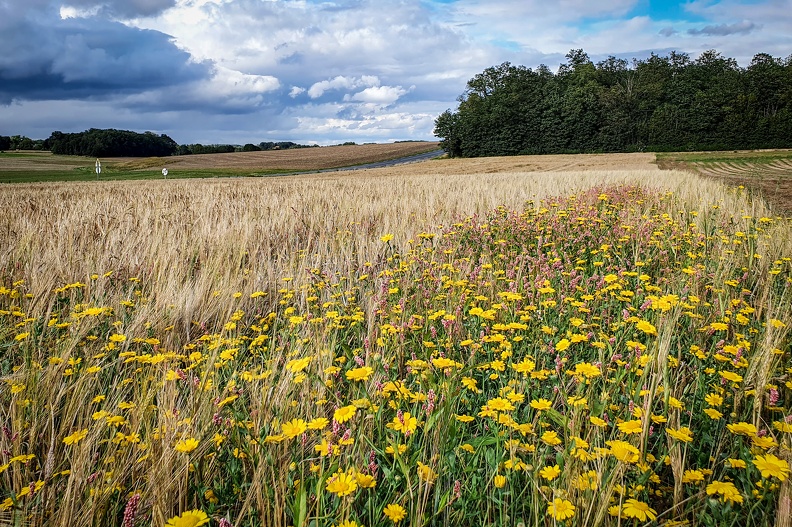
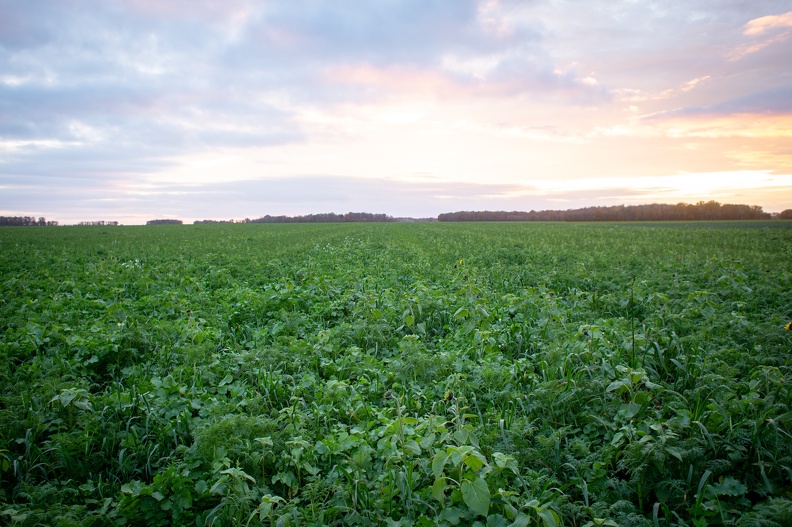
Heard, Read!
Four billion euros is the amount that crop protection companies have committed to invest in the search for bioprotection solutions between 2015 and 2030. 10 billion euros are earmarked for precision agriculture and digitisation over these fifteen years.
Source CropLife
“Moving forward in unison means pooling all of our successes and failures. This is a swifter and safer way to find solutions. We can sometimes save ourselves the trouble of implementing solutions that others have already tested and that have failed. The GIEE (economic and environmental joint interest group) can also be key in developing innovative practices through small trials repeated in different parts of the country in collaboration with farmers belonging to the group (…)”
Benjamin Caron, President of the Economic and Environmental Joint Interest Group (GIEE) called Semis direct Avenir based in Jouy-sous-Thelle, Oise.
Verbatim record read at Réussir Grandes Cultures, December 2022, — Groups allow innovations to take off by Virginie Charpenet.
« Agricultural innovation needs to be unleashed if agroecological transition is to be a success. Farmers need a new dynamic and economic performance. A well adapted regulatory framework would be able address three major challenges: manage food sovereignty, reduce our environmental footprint and actively fight climate change. »
Bruno Baranne, President of Phyteis, at a press conference held on 23 February.
Ten years after its launch, the EcophytoPic website now hosts 40,000 regular monthly visitors and offers over 6,000 open access resources. It provides information on sustainable and innovative farming methods and practices for crop protection.
Source Acta
All regulatory information printed on plant protection product labels is going to be standardised and made accessible from a single digital database. It is called Digital Label Compliance and is a an unprecedented European-wide project led by CropLife Europe. It bears witness to the collective ambition of crop protection companies to facilitate digital farming.
Source Phyteis
Business highlights
From November 2022 to February 2023, find the national and international news about what Phyteis members are doing to accelerate research and support farmers in the combinatorial approach to crop protection.
February 2023
For the second consecutive year, FMC is piloting the ObsHerb network for nine weeks with the aim of monitoring weed emergence dynamics in wheat fields. The first survey was carried out on 3 February in 40 departments. ObsHerb brings together 250 farmers. Observations made by the FMC team are shared via the EvalioFlash Flore application.
On 2 February in Paris at an agricultural distribution centre, UPL presented its roadmap for 2035-2040. The company is revamping its product portfolio devoting 60% to biosolutions (biocontrols and biostimulants), 10% to conventional plant protection products and 30% to digital agricultural services. In 2021, biosolutions accounted for 29%.
Bayer and Kimitec have signed a partnership to accelerate the development and marketing of biocontrol products and biostimulants. The global market for biosolutions is expected to reach nearly € 25 billion by 2028.
January 2023
At Innodays on 30 January at the Convention Centre in Massy Palaiseau, Syngenta announced the Summer 2023 launch in France of an agronomic digital platform called Cropwise Protector. Equipped with a satellite-imaging map-editing module, it includes all the digital tools developed by the company to predict and manage crop protection.
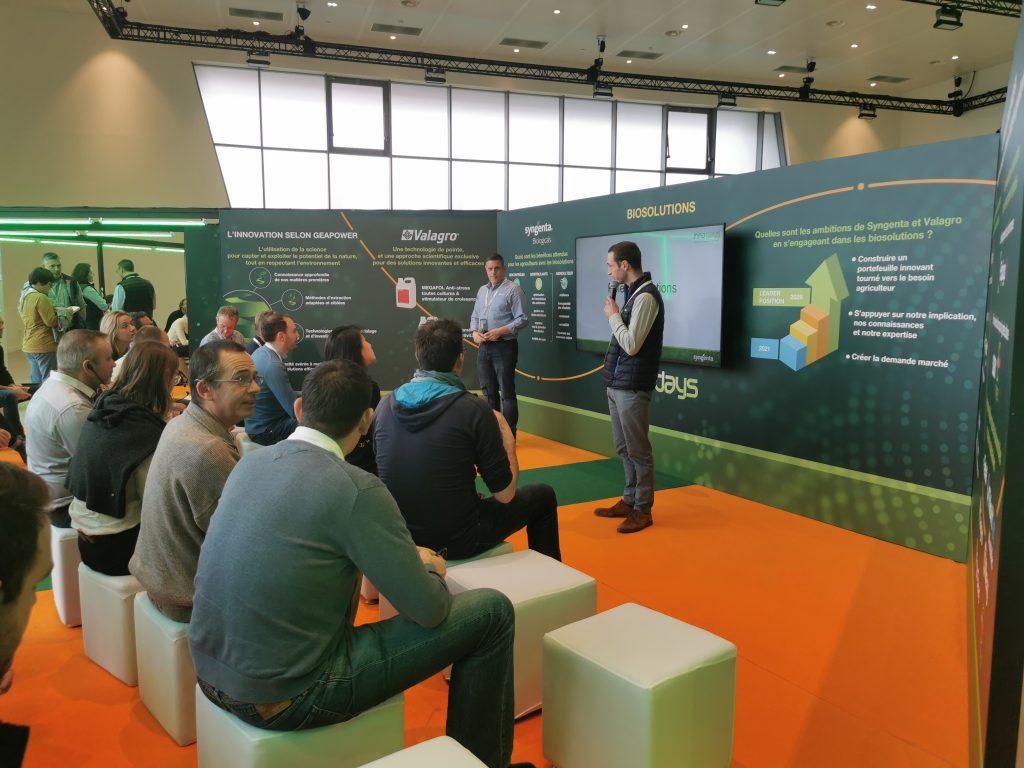

The de Sangosse Vine Observatory was activated at the end of January with the monitoring of snail populations in vineyards. These molluscs typically become active in February to feed on buds and shoots. Vinegrowers have an interactive map to monitor weekly results of five trapping networks set up on 110 plots. From the Loire Valley to the Gard, they will monitor these results for four months.
As part of what is known as Sival Innovation, a trophy created by the specialised crops fair held from 17 to 19 January in Angers, Sumi Agro was awarded a silver trophy for a biostimulant that increases plant resistance to water stress. In the varietal innovation category, BASF (Nunhems) received a bronze trophy for a “tearless” onion.
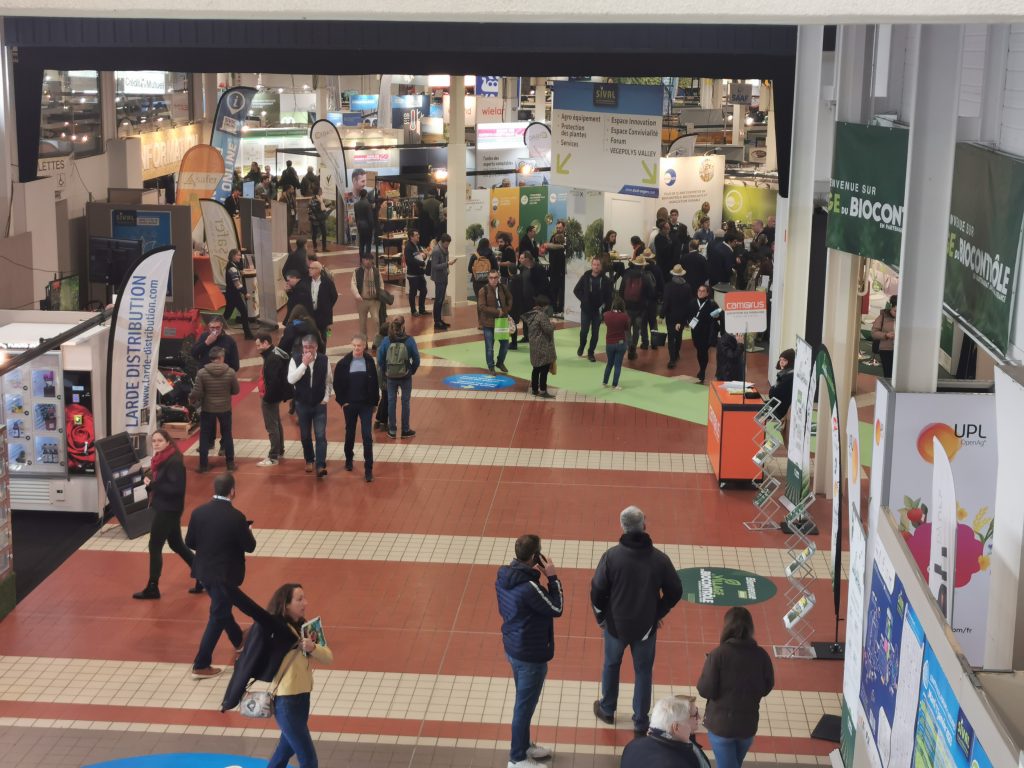

Sival 2023
EasyConnect roll-out. Starting in 2023, eleven plant protection companies and members of Phyteis will gradually equip their product containers with the easyconnect cap. The ensemble, spray connector and cap, constitutes the easyconnect closed transfer system.


Bayer acquired the German biotechnology start-up Targenomix. This company uses systemic biology tools combined with computer technology to identify new modes of action for plant protection compounds. The group is also partnering with biotechnology start-up Oerth Bio, which has developed a human health technology to break down targeted proteins. The technology will be explored to control weeds, crop diseases and even pests.
Corteva Agriscience and Eden Research announced an agreement effective 1 January 2023 for the exclusive distribution of a biofungicide to protect vines and fruit trees. This agreement applies to France.
December 2022
FMC Corporation and Micropep Technologies will jointly develop bioherbicide solutions composed of micropeptides. The partnership will target the control of the main herbicide-resistant weeds affecting maize and soybean.
BASF’s vegetable seed business and IUNU, a provider of vision software and artificial intelligence (AI), are partnering to advance digital phenotyping for the breeding of hydroponic lettuce varieties.
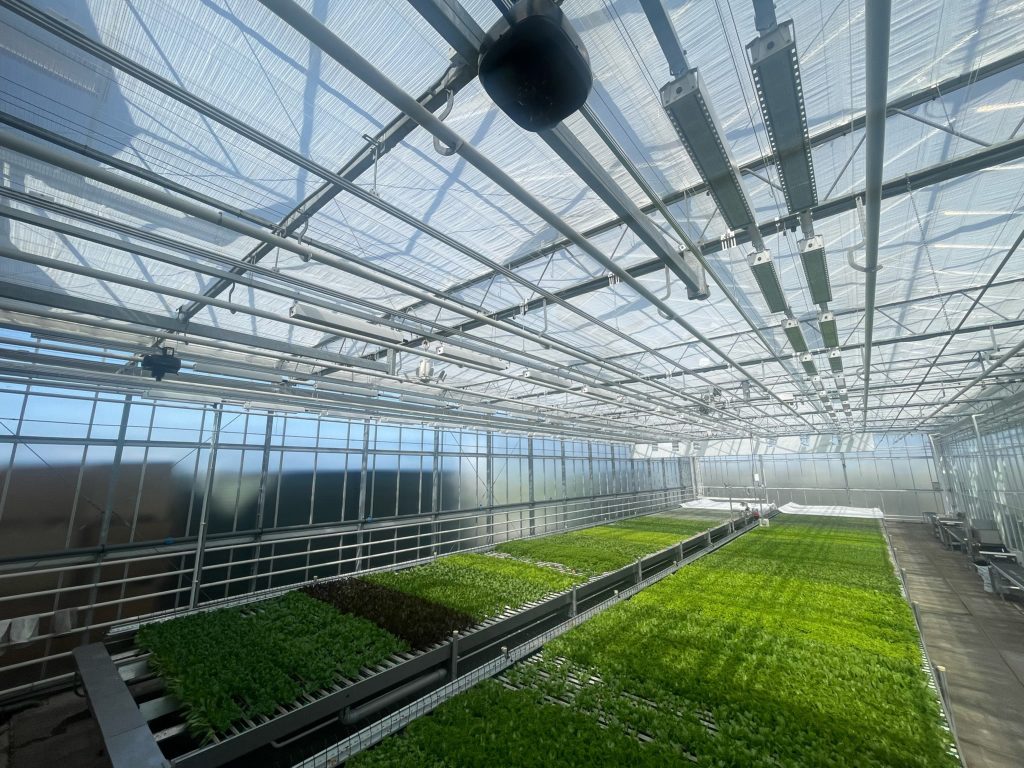

SBM LifeScience received the Victoire d’Or prize in the “headquarters” category awarded by VALHOR, the French professional association of horticulture, floristry and landscaping. This award recognises the responsible construction of the SBM headquarters. The project was carried with the collaboration of the employees. It therefore contributed to the quality of work life (QWL) and also helped develop biodiversity, promote natural gardening and breathe new life into what was an industrial wasteland.
Corteva Agriscience explores precision application technologies for crop protection products using on-farm data, advanced analysis and spraying equipment. In this connection, the company announced a collaboration agreement with Nevonex powered by Bosch.
November 2022
First edition of the Conference on preventing pesticide-related risks organised by the regional “Contrat de Solutions” group. The series of conferences was launched in the North and ran from 22 November to January 2023. During that period, six agricultural high schools hosted half-day workshops for students and professionals as well as a round table.
Mitsui andCo., Ltd. announced the creation of Certis-Belchim B.V., the result of a merger of its European subsidiary Certis Europe and the company Belchim Crop Protection acquired in 2021. The new entity, led by Ronan Goff, will offer crop protection solutions based on a combinatorial approach, plus additional technical expertise and a better understanding of the market.
Gin Bionic, a collaborative project led by SBM Company, Greenpharma and the IEES Laboratory, has received €2.9 million in support within the framework of “France 2030”. It is expected to develop a tool that combines reverse genetics and molecular modeling to accelerate the search for natural insecticidal molecules. It must also develop and market biocontrol products based on these molecules to control two major pests affecting field crops.
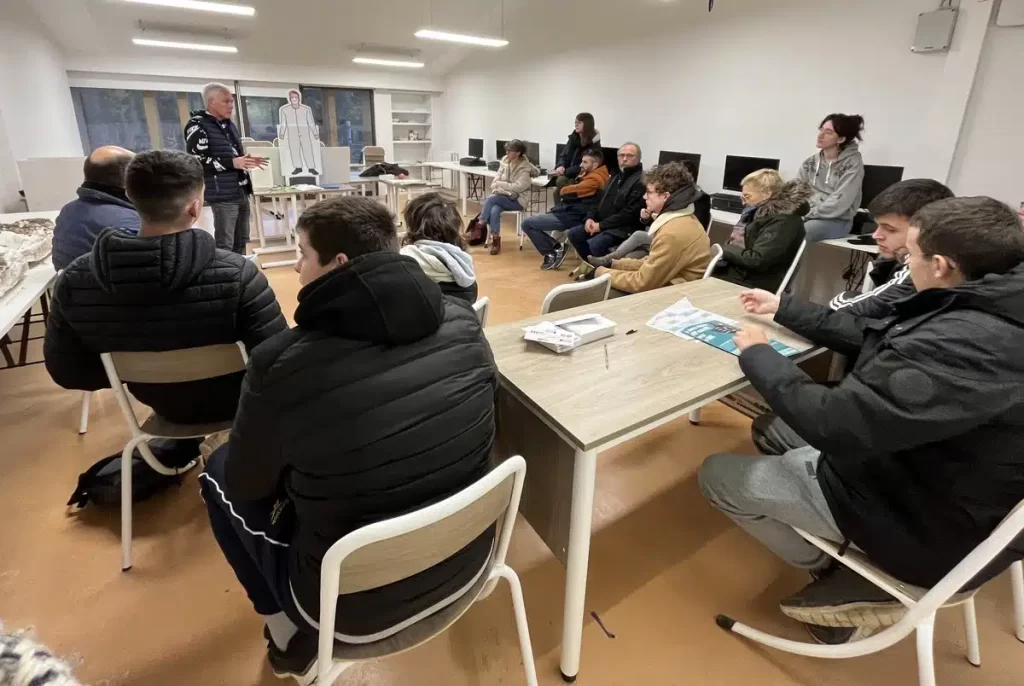

Conference on the prevention of pesticide-related risks held on 12 December in Aude at the Charlemagne high school in Carcassonne.

